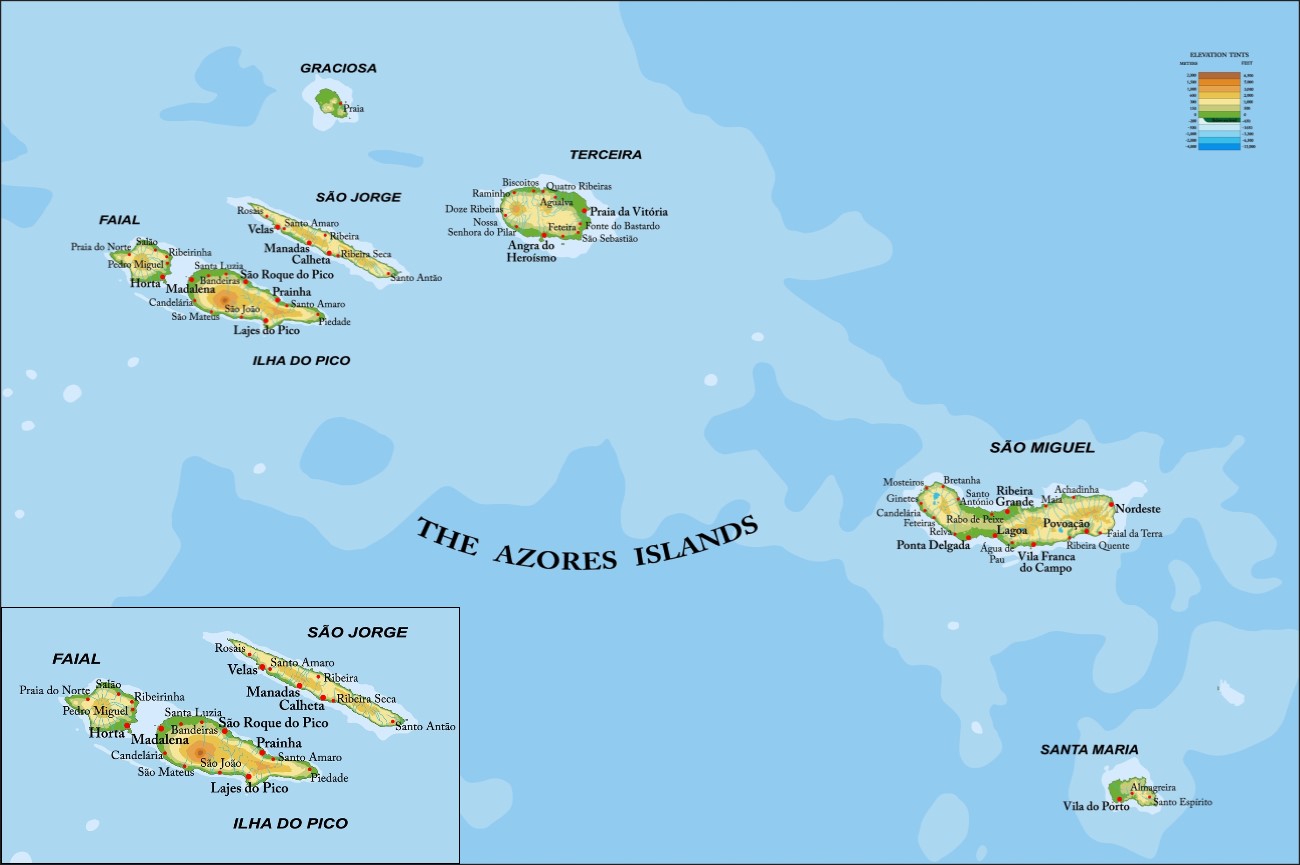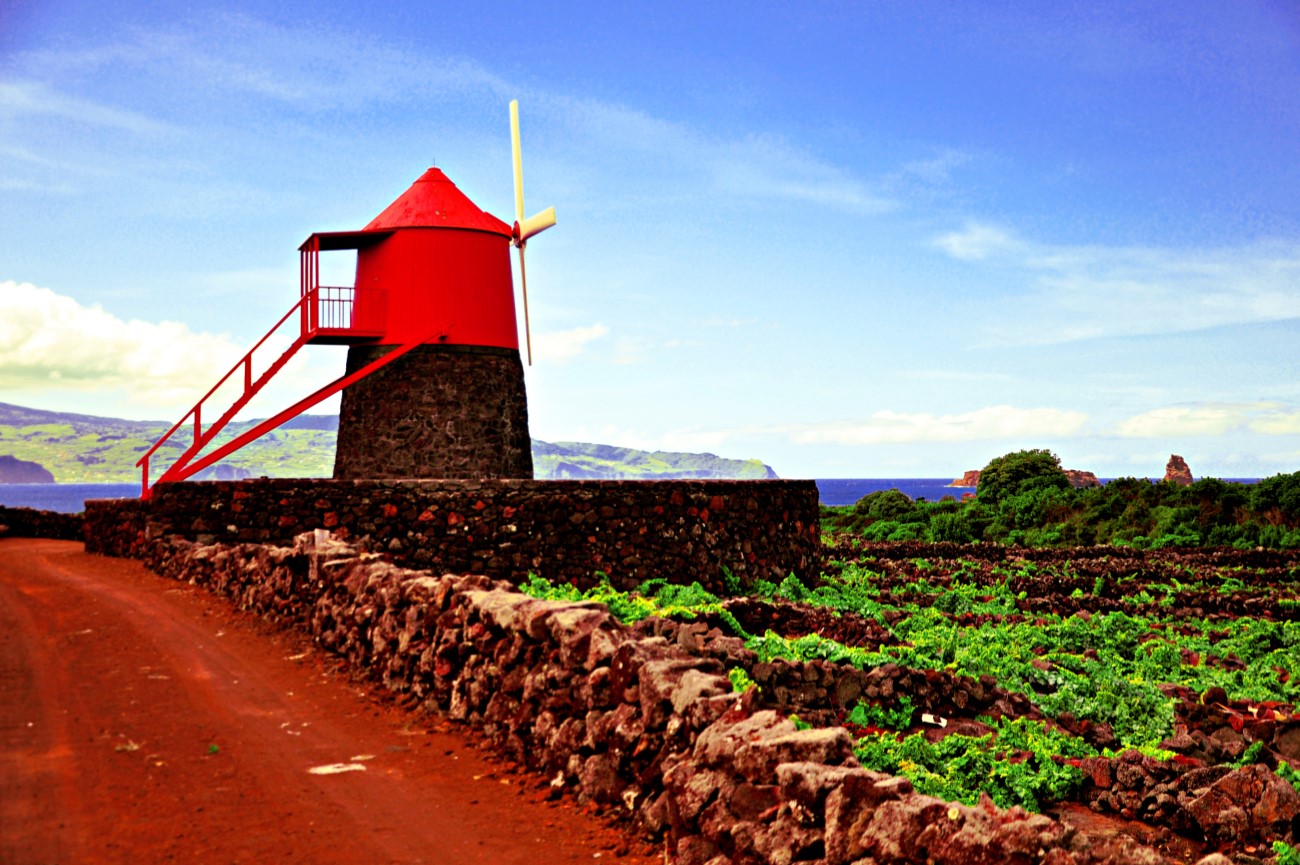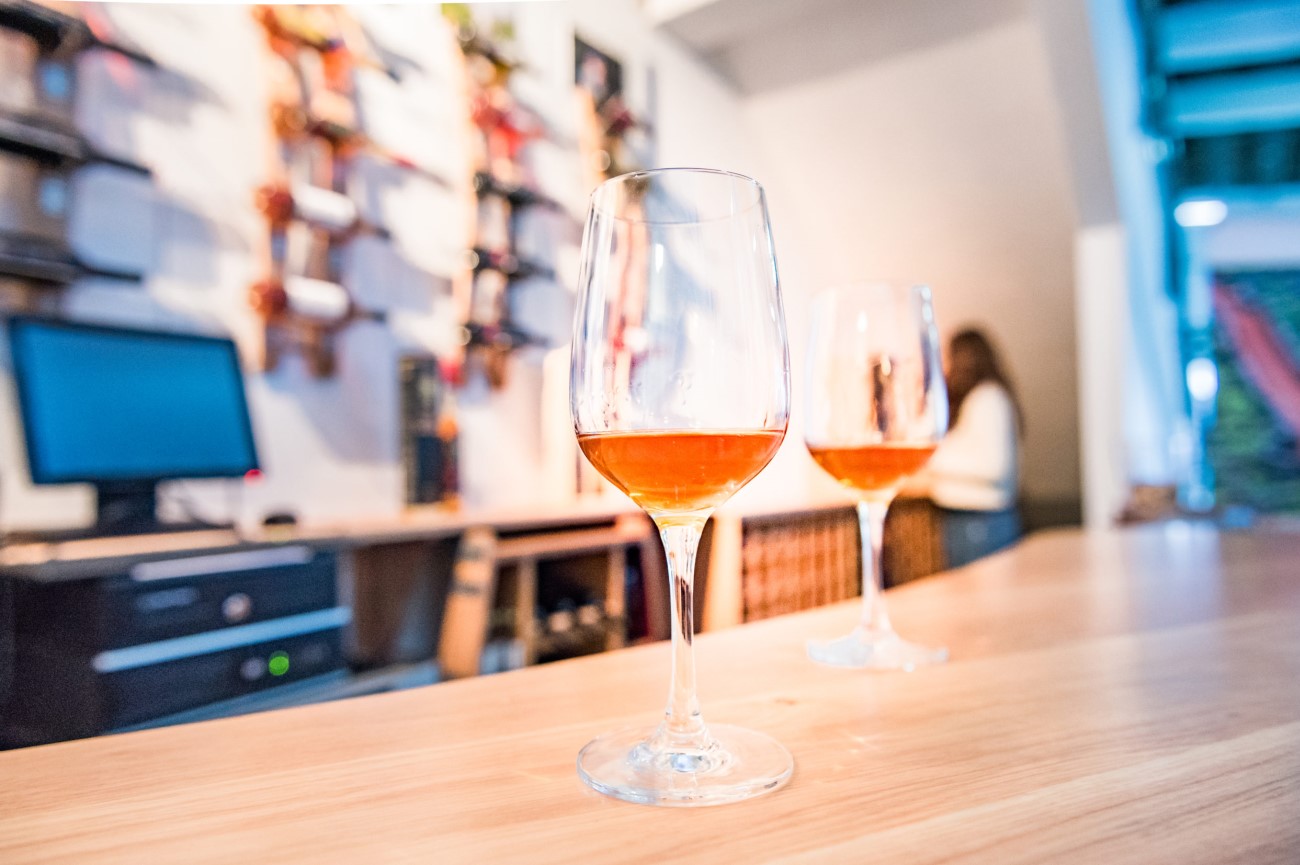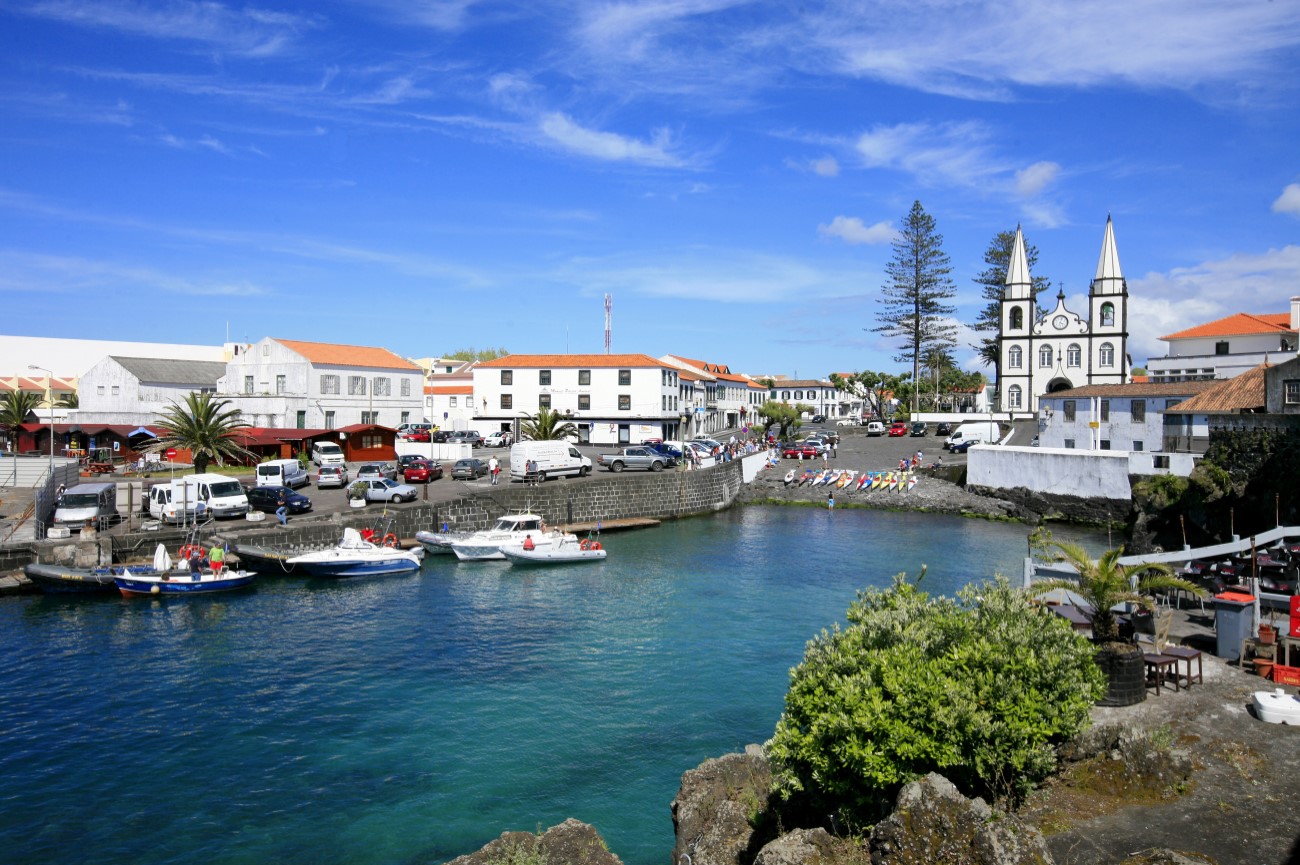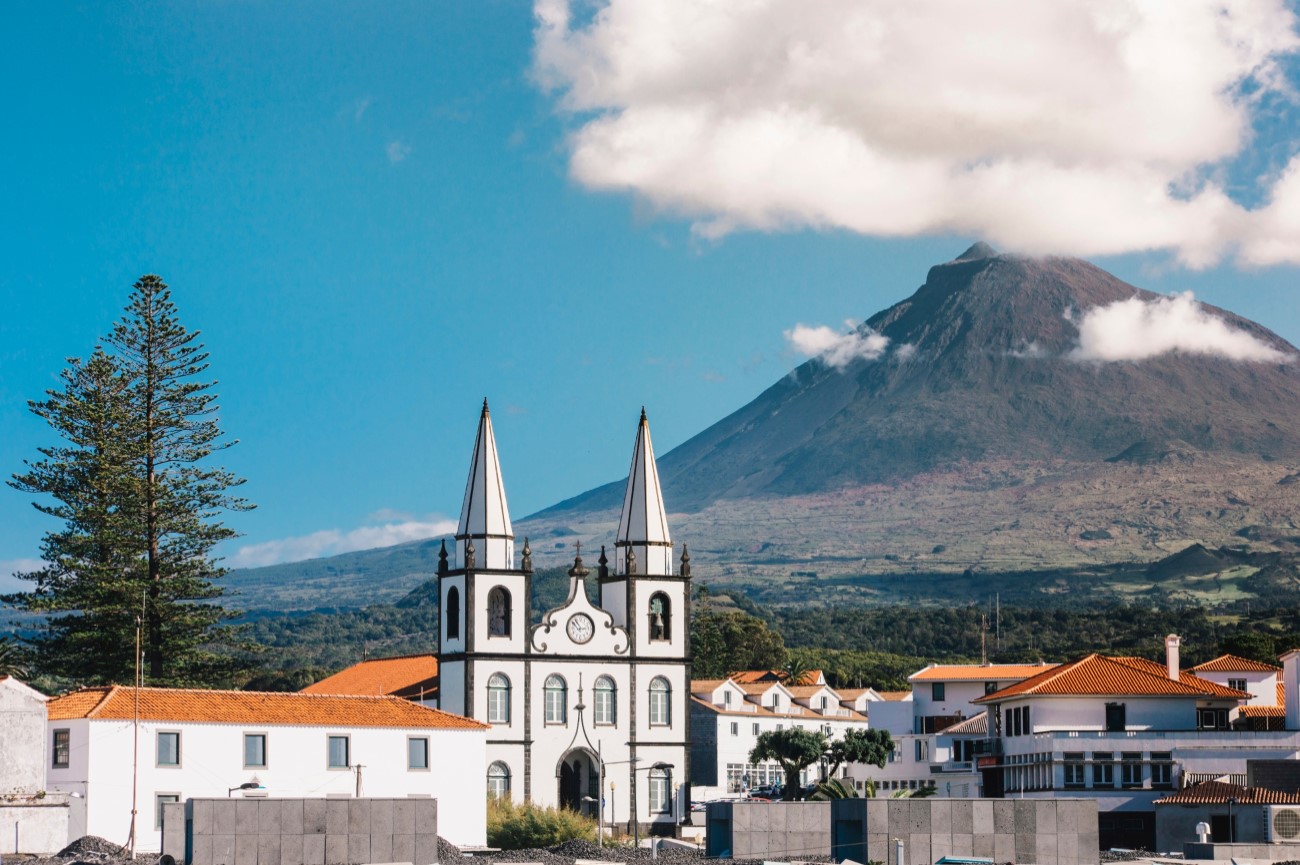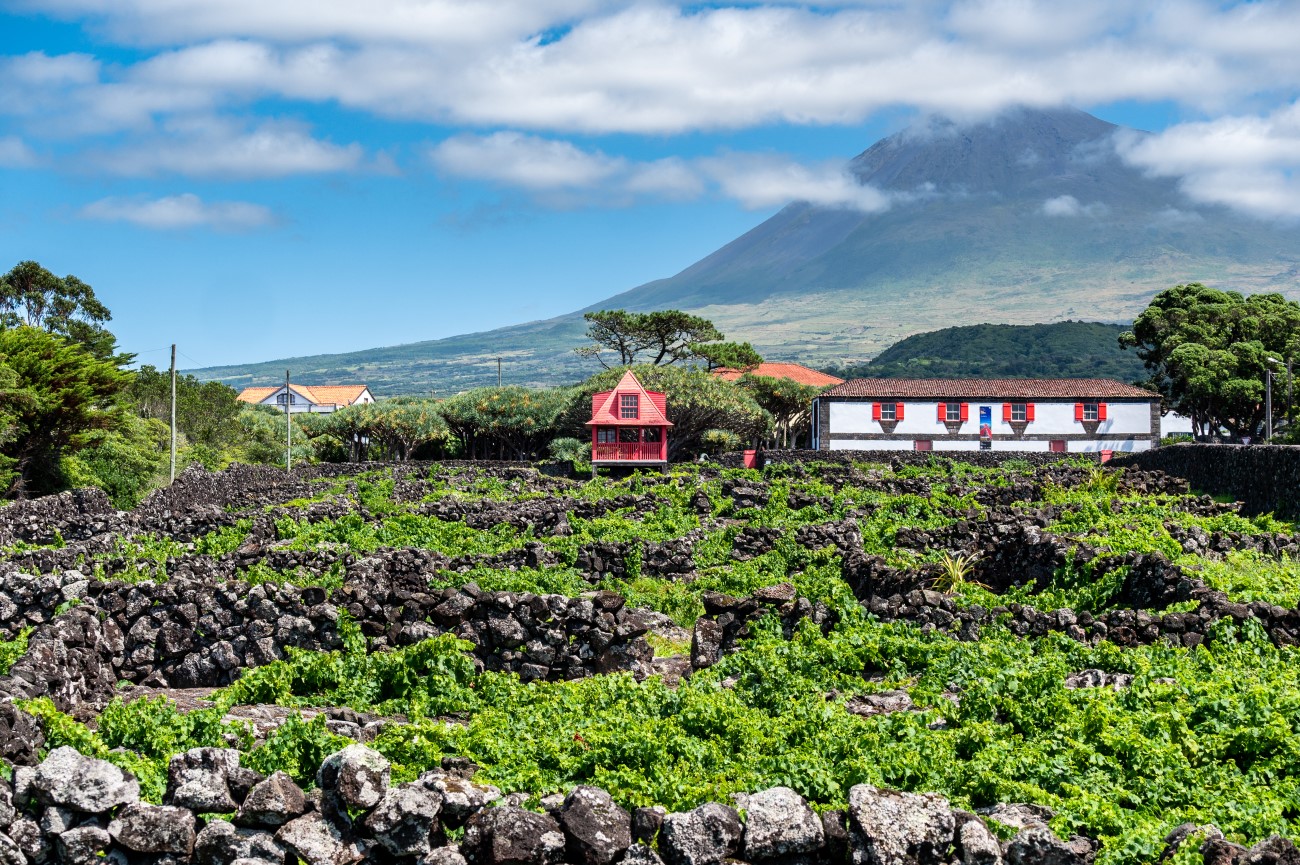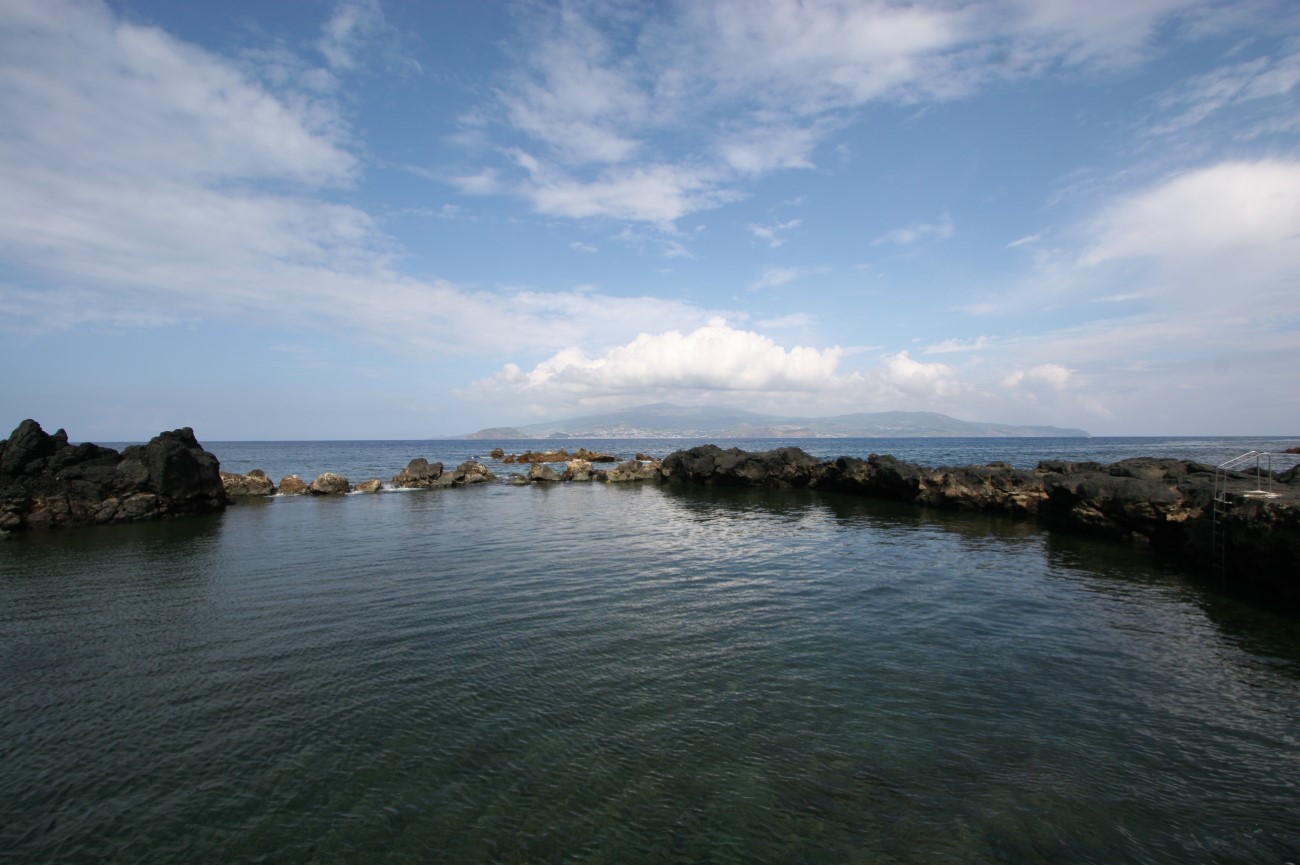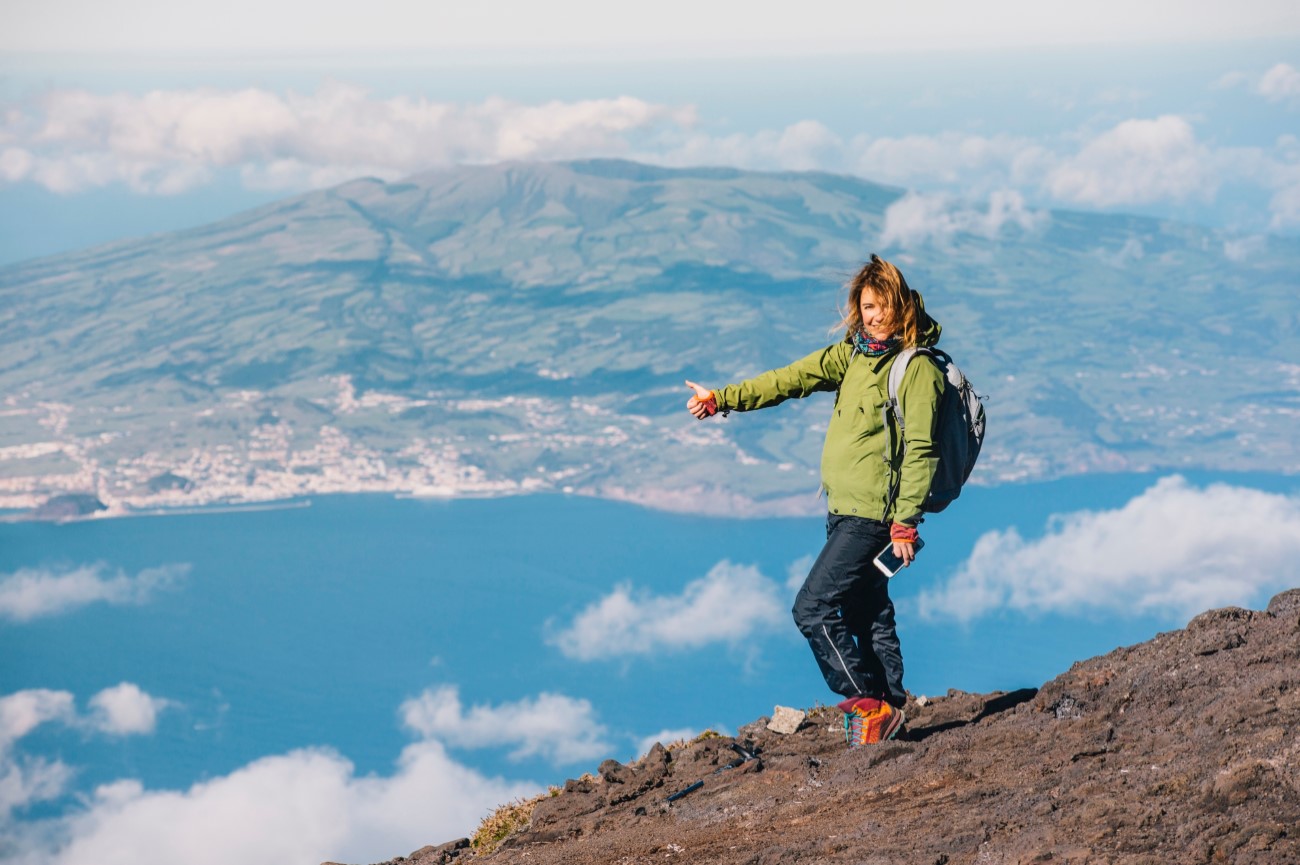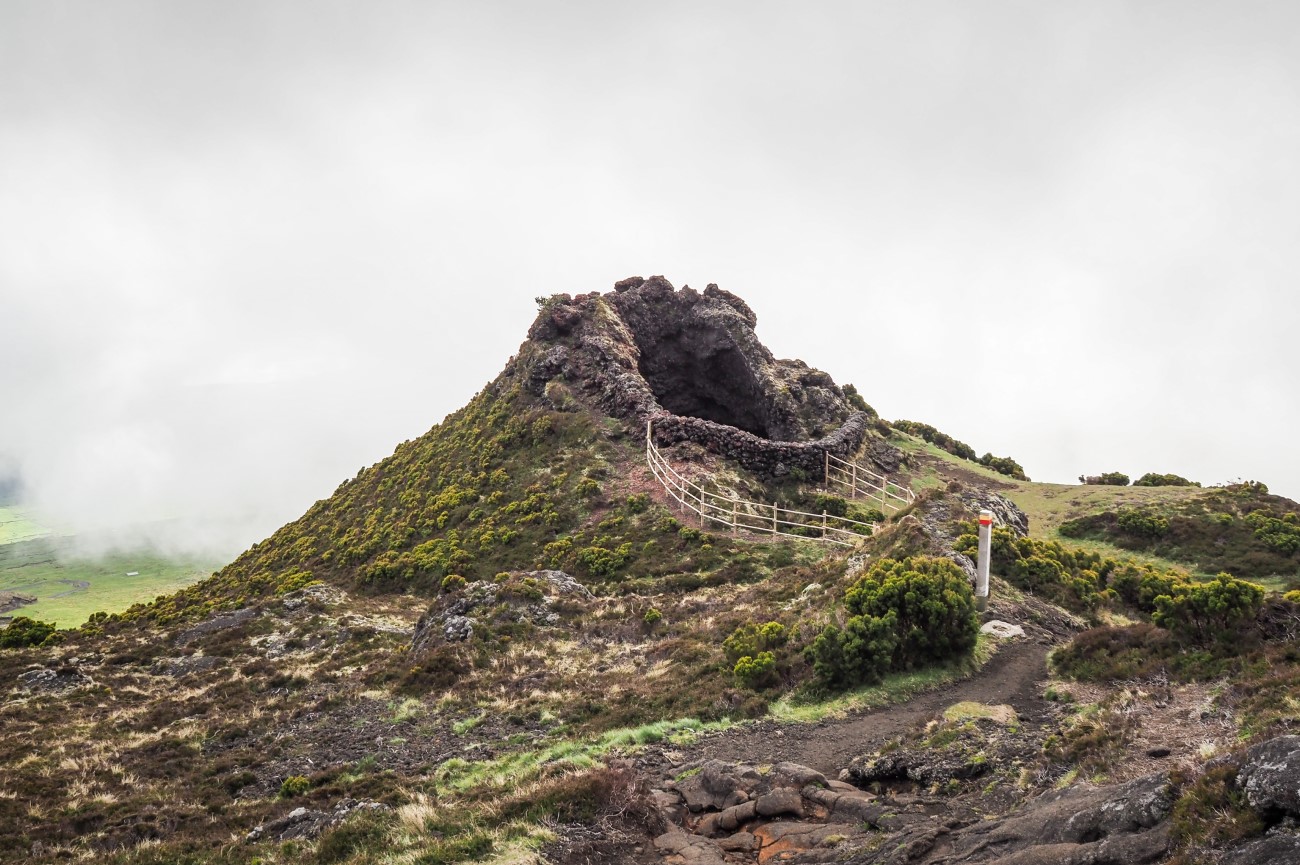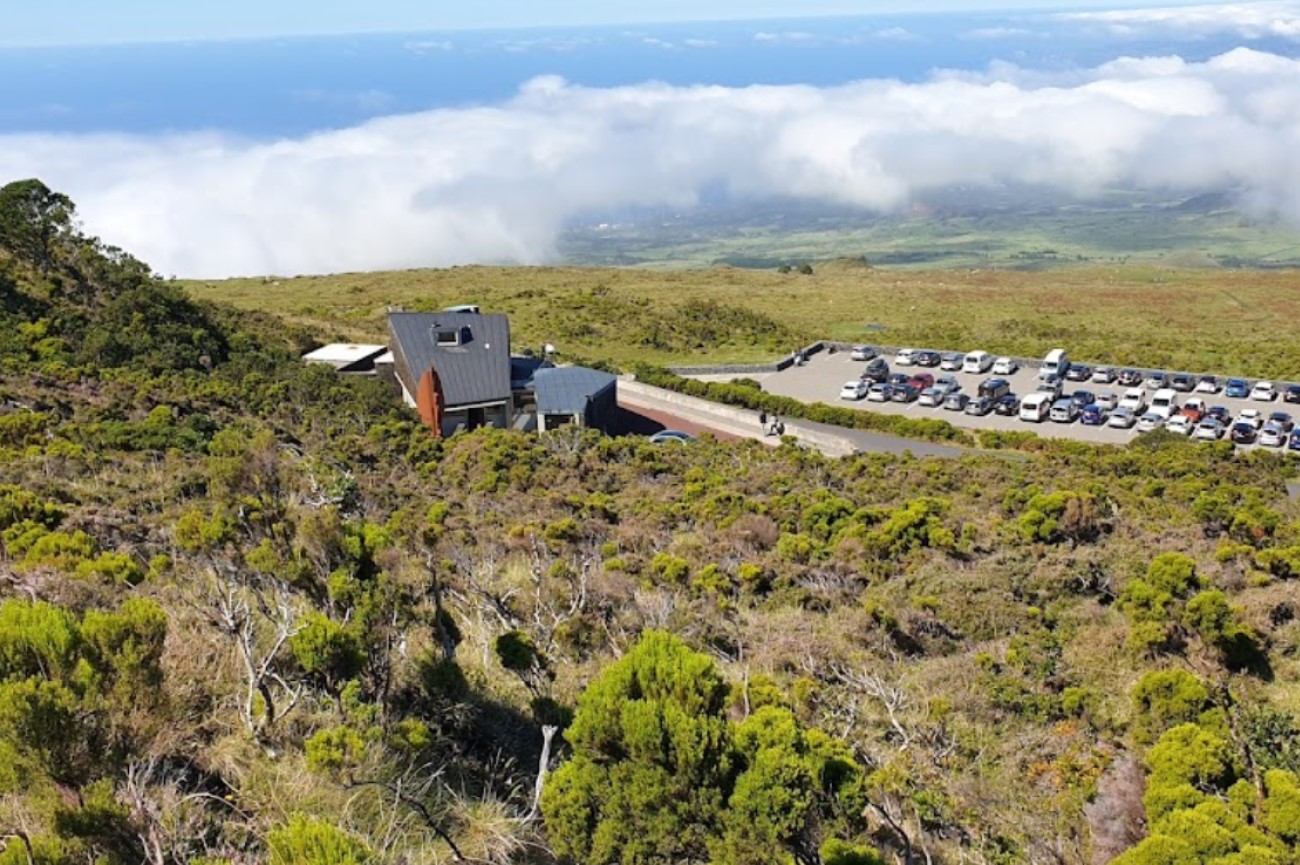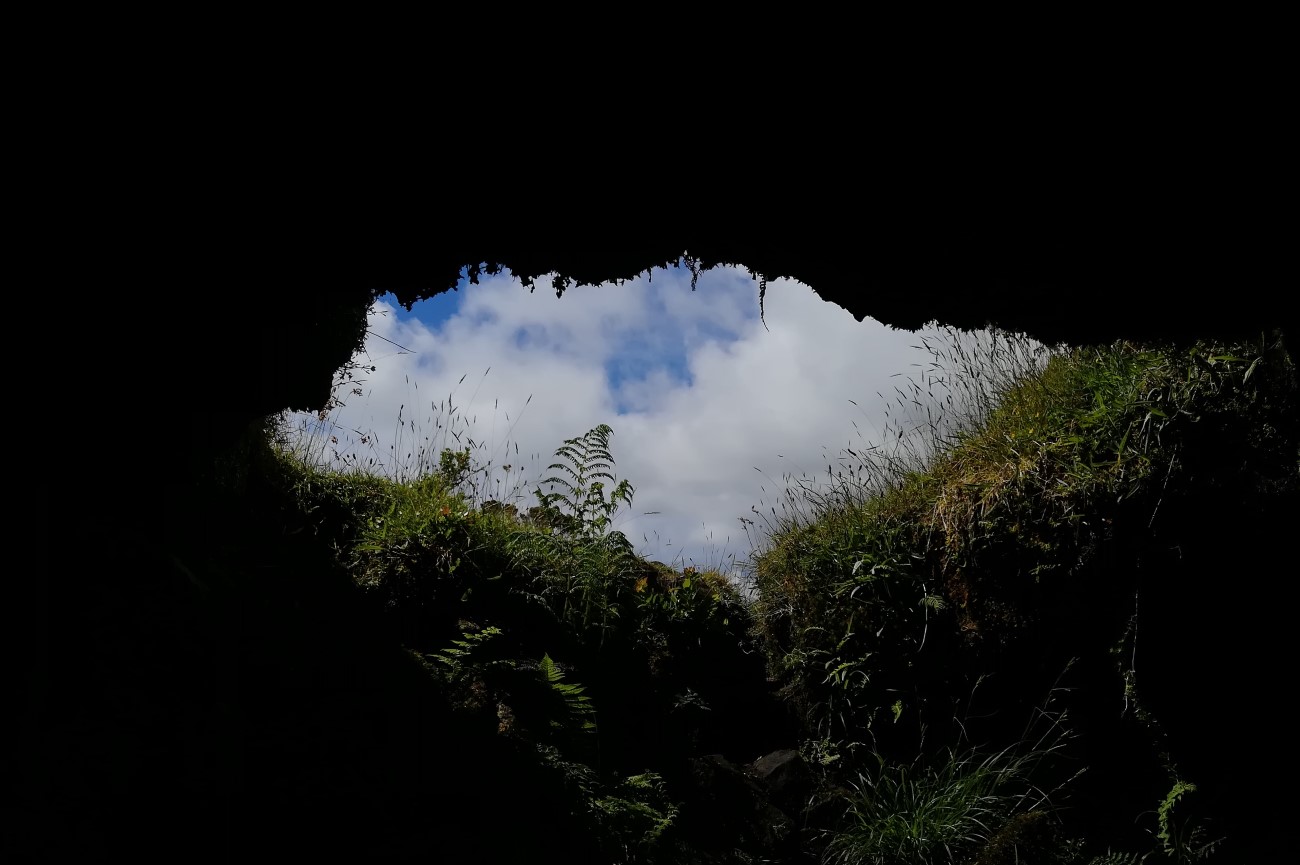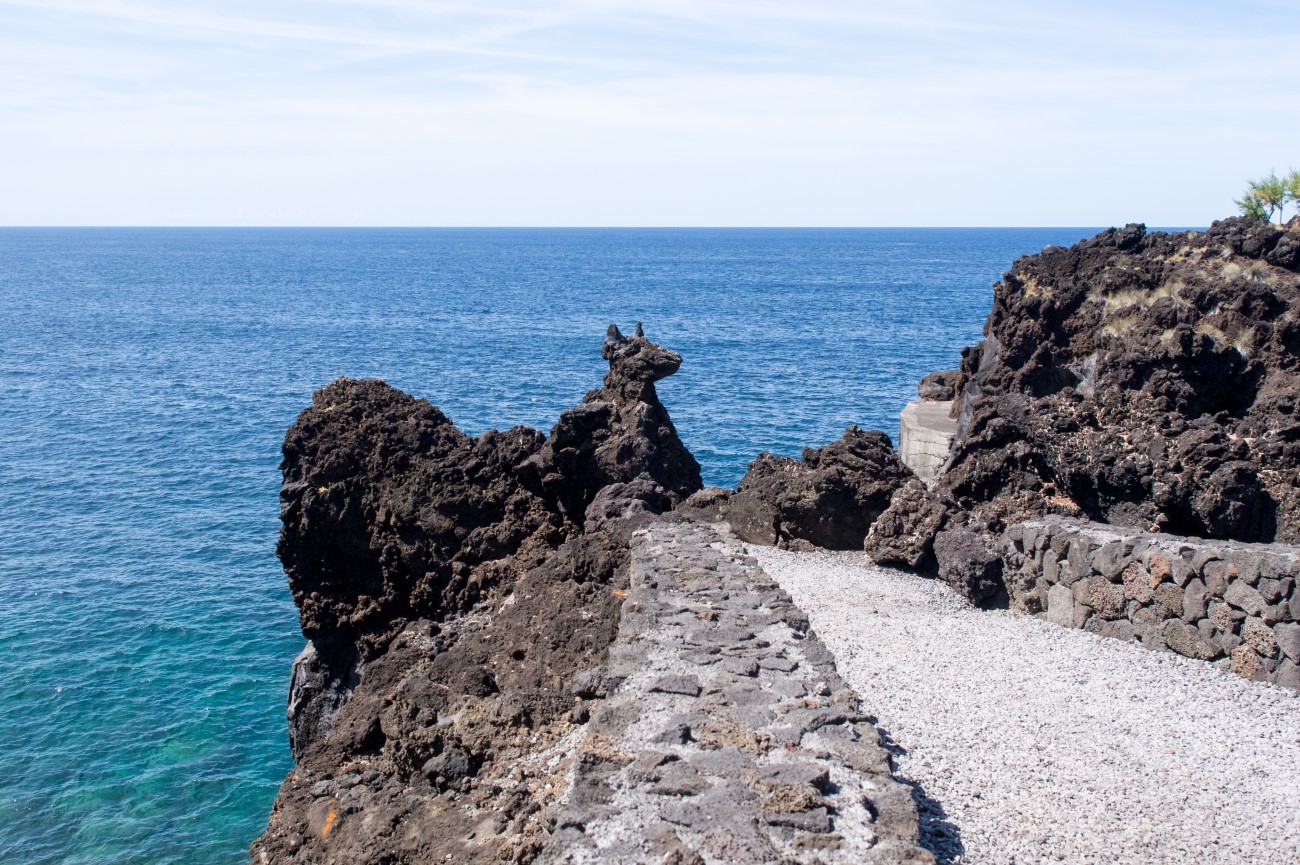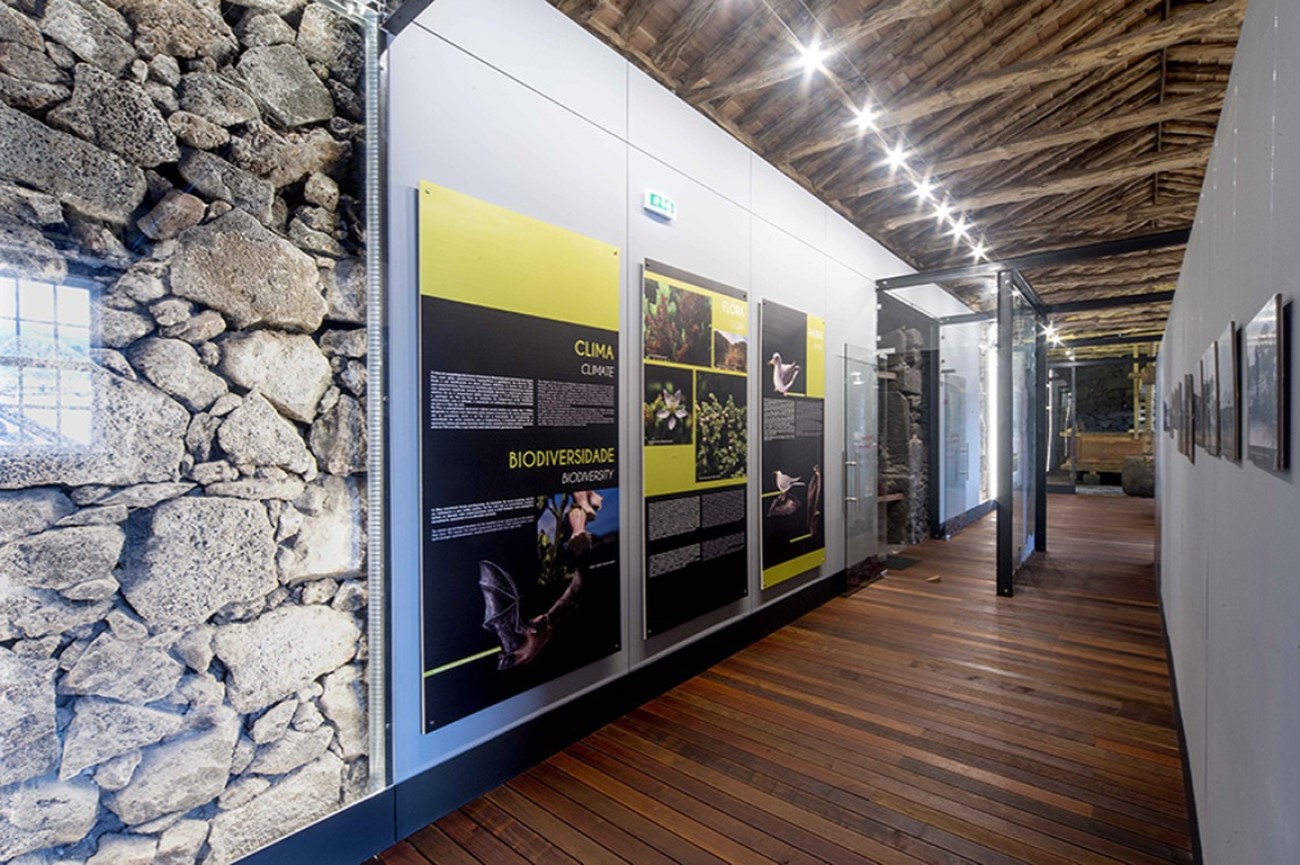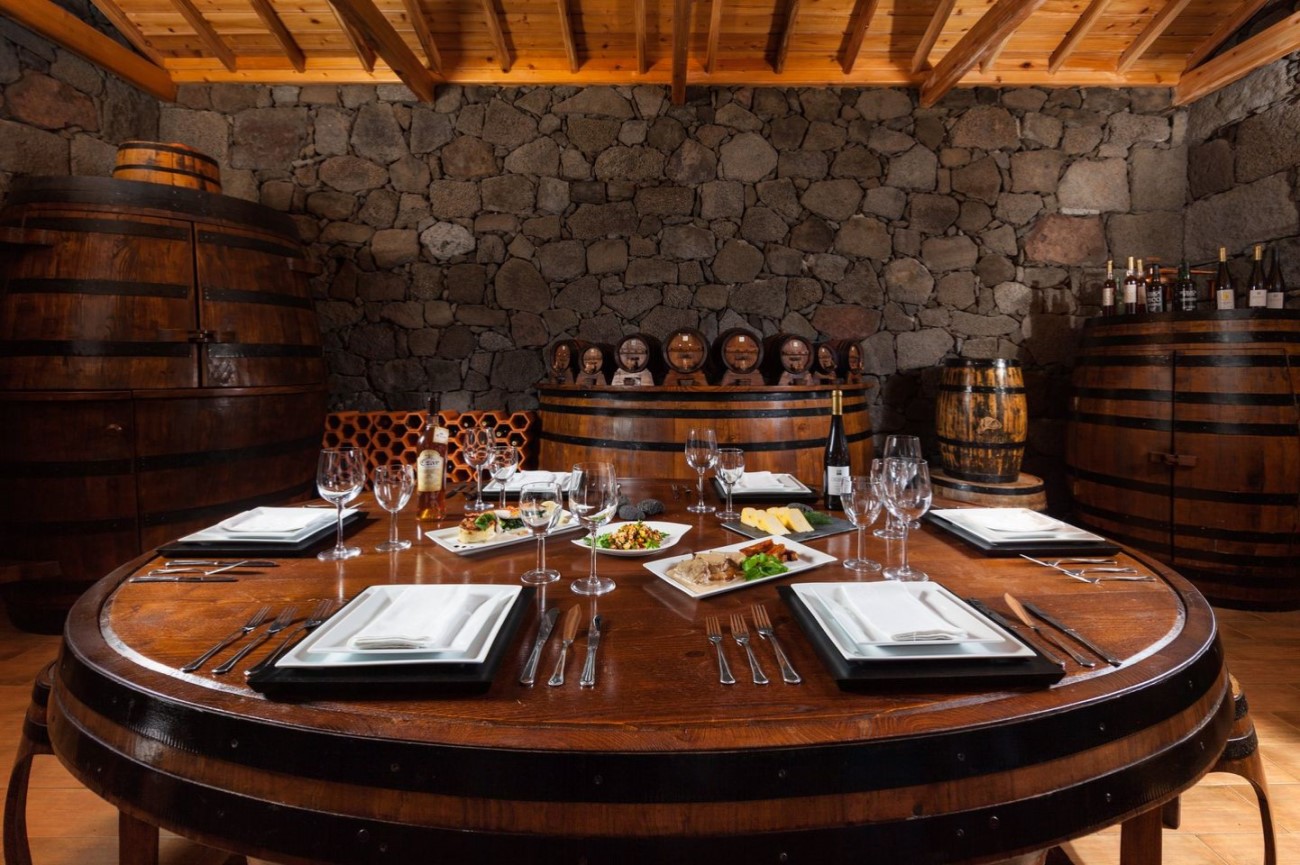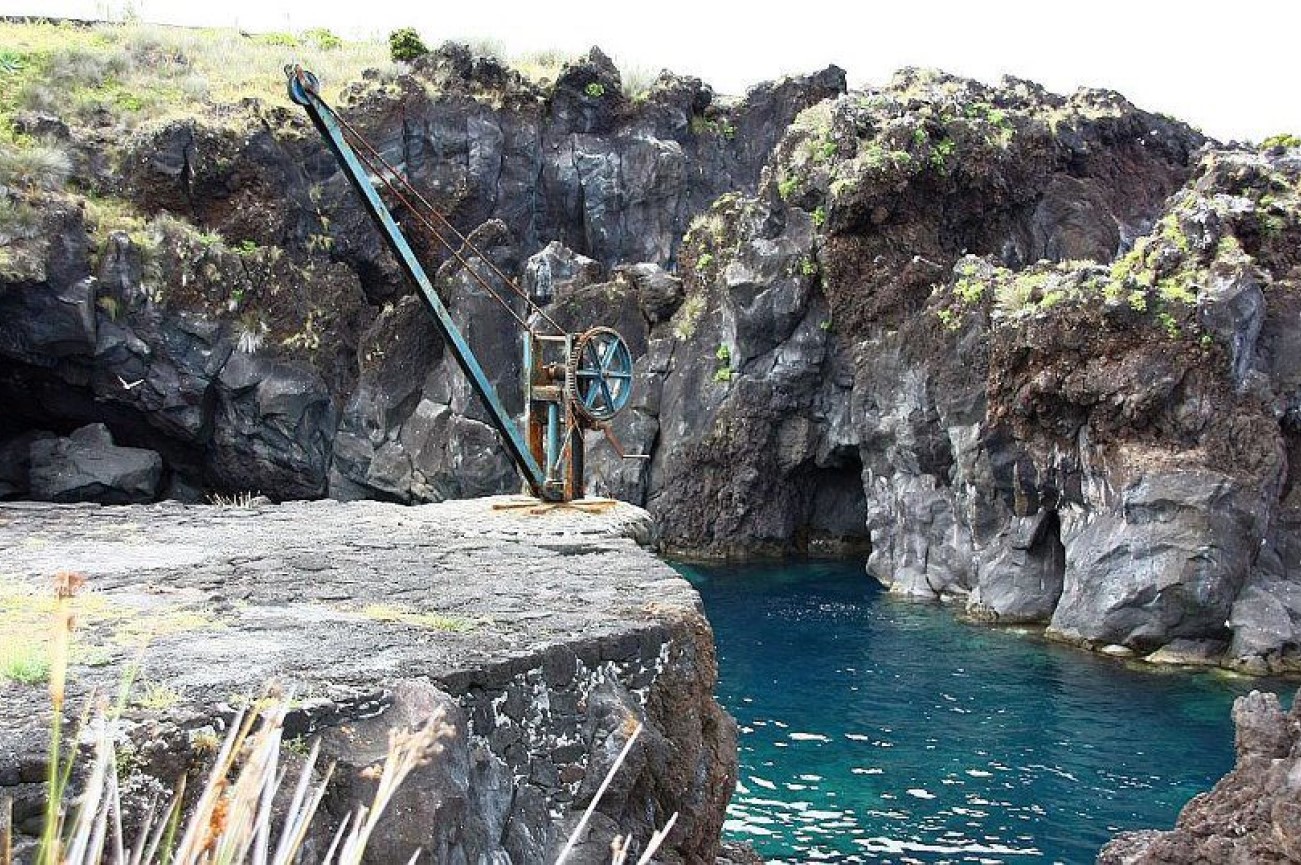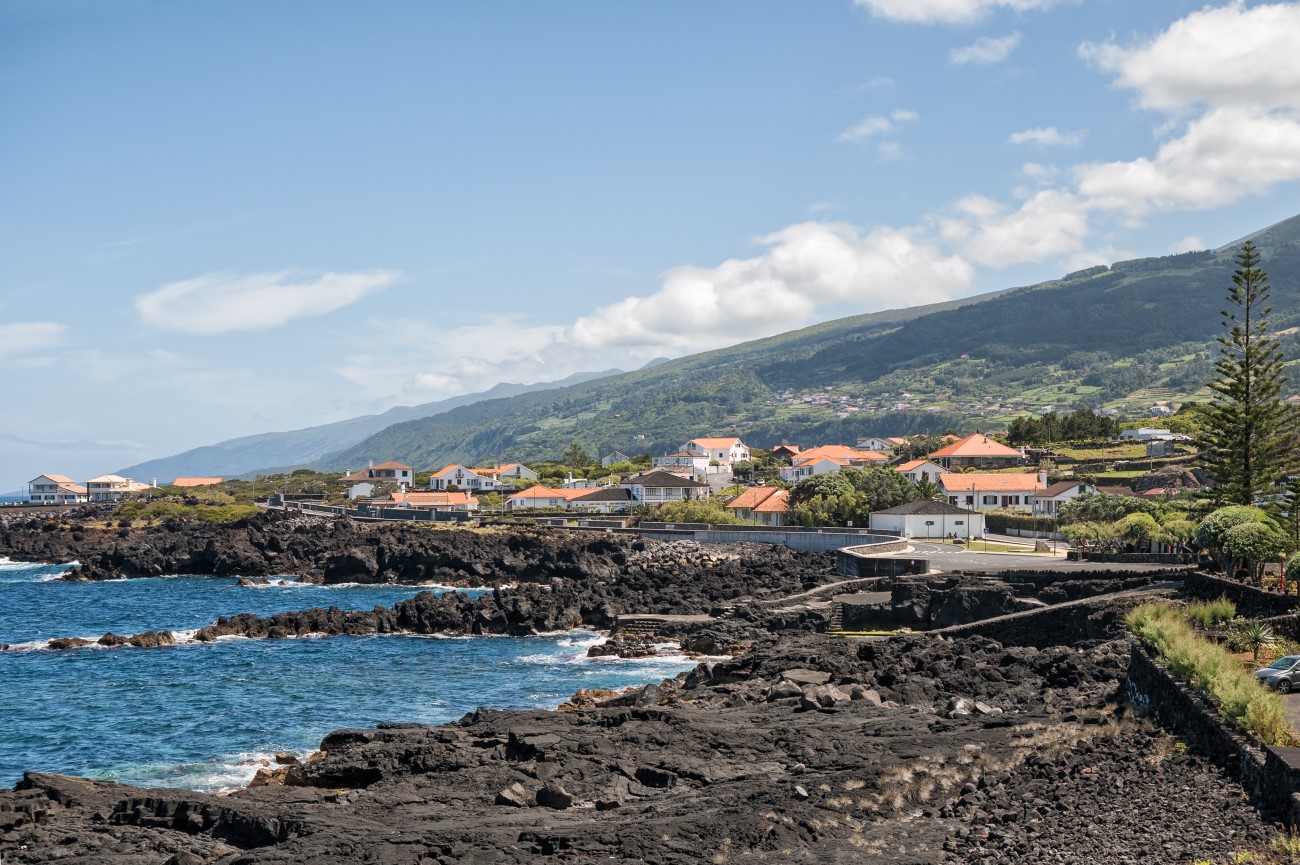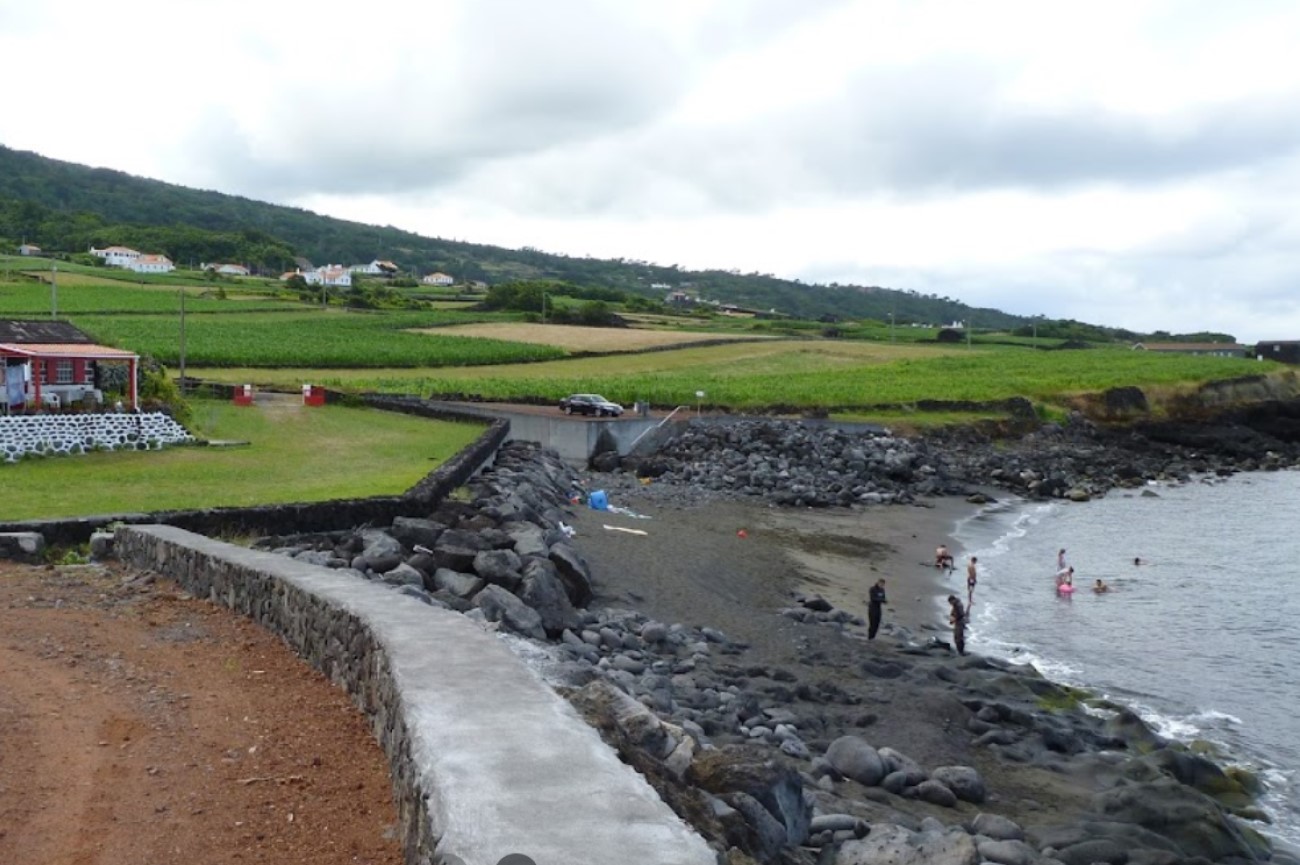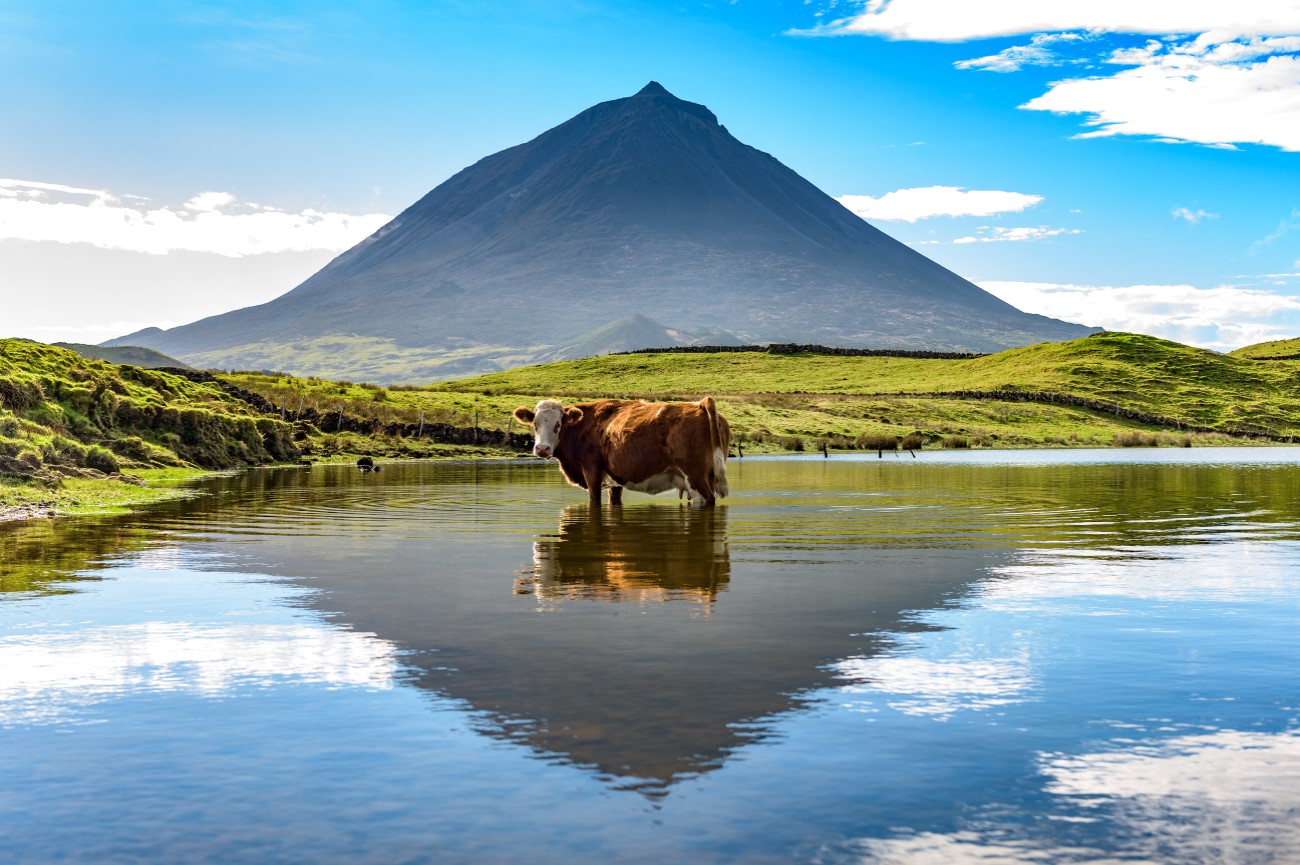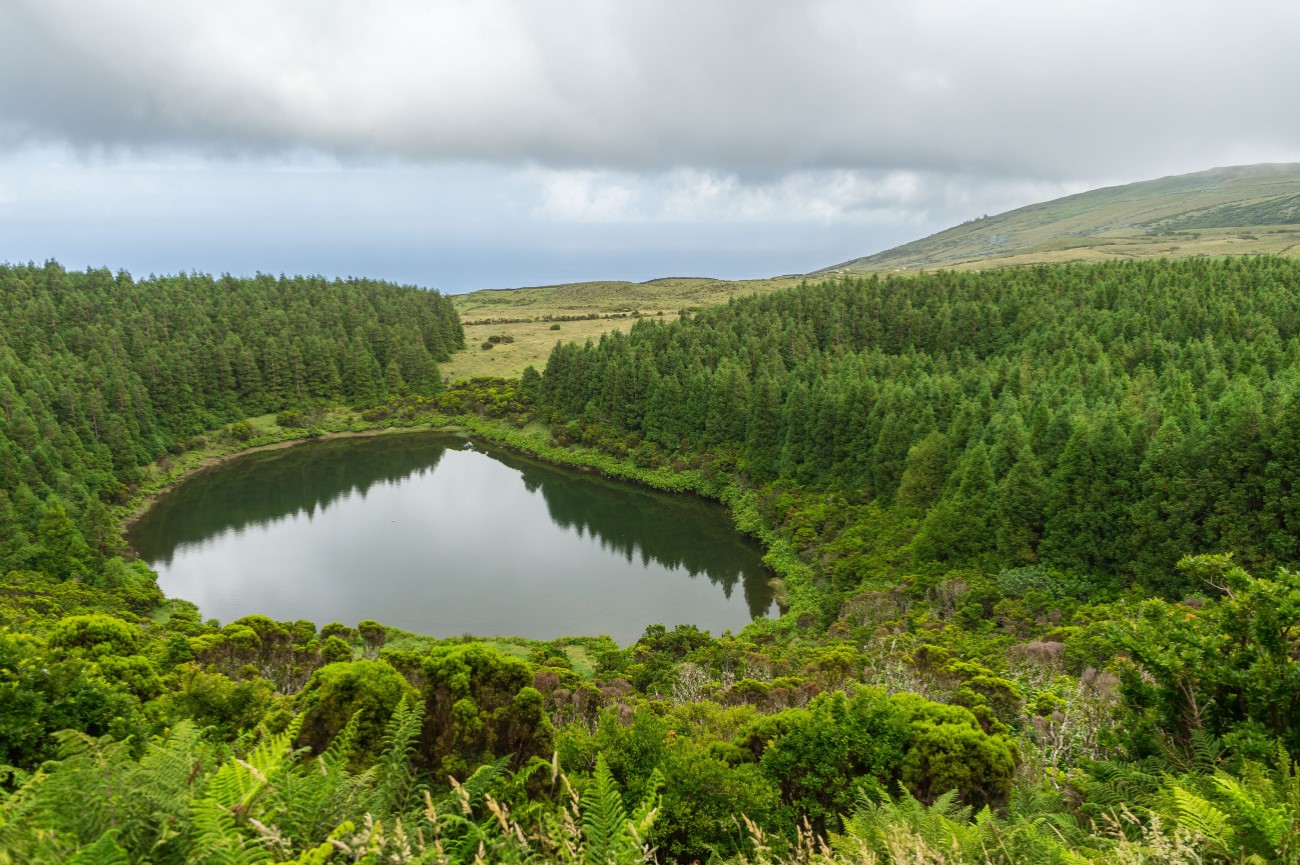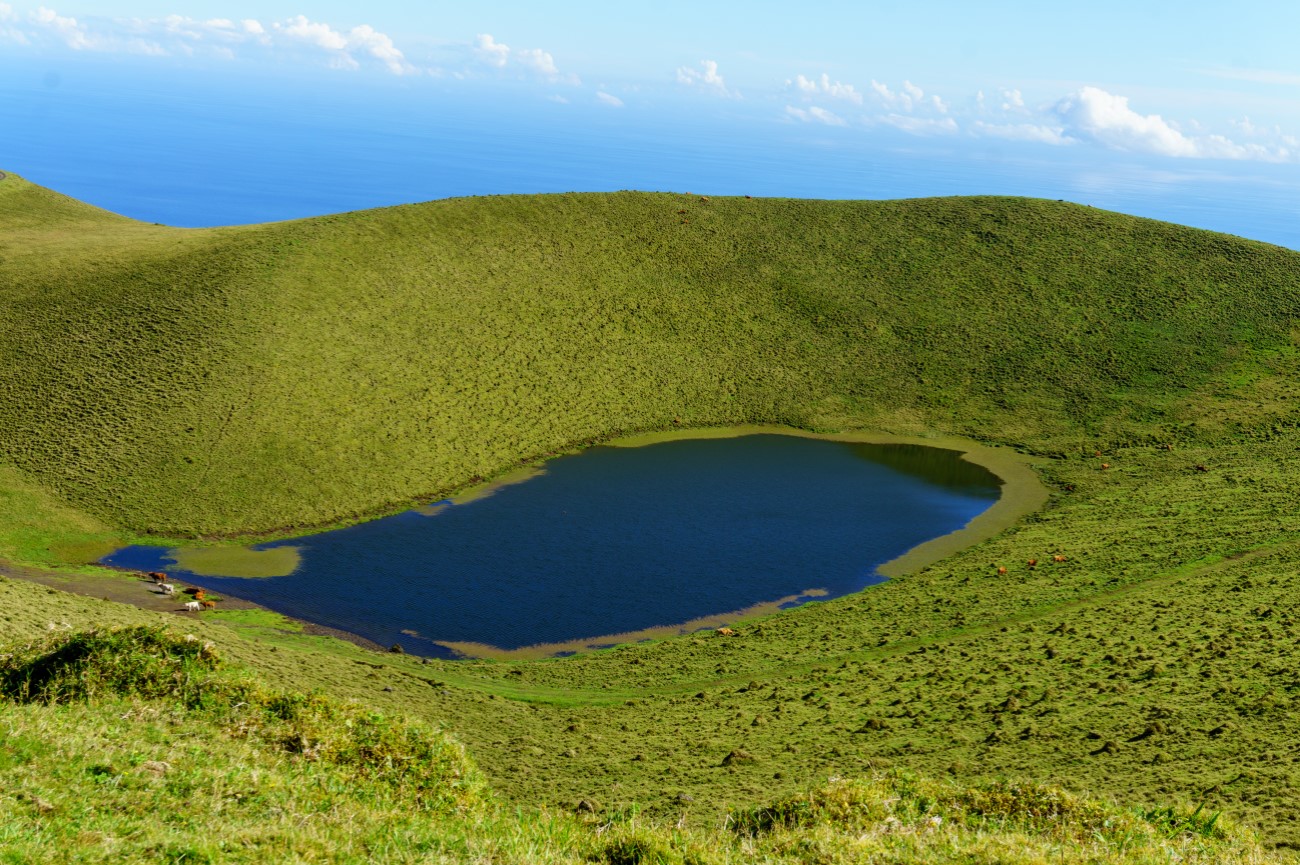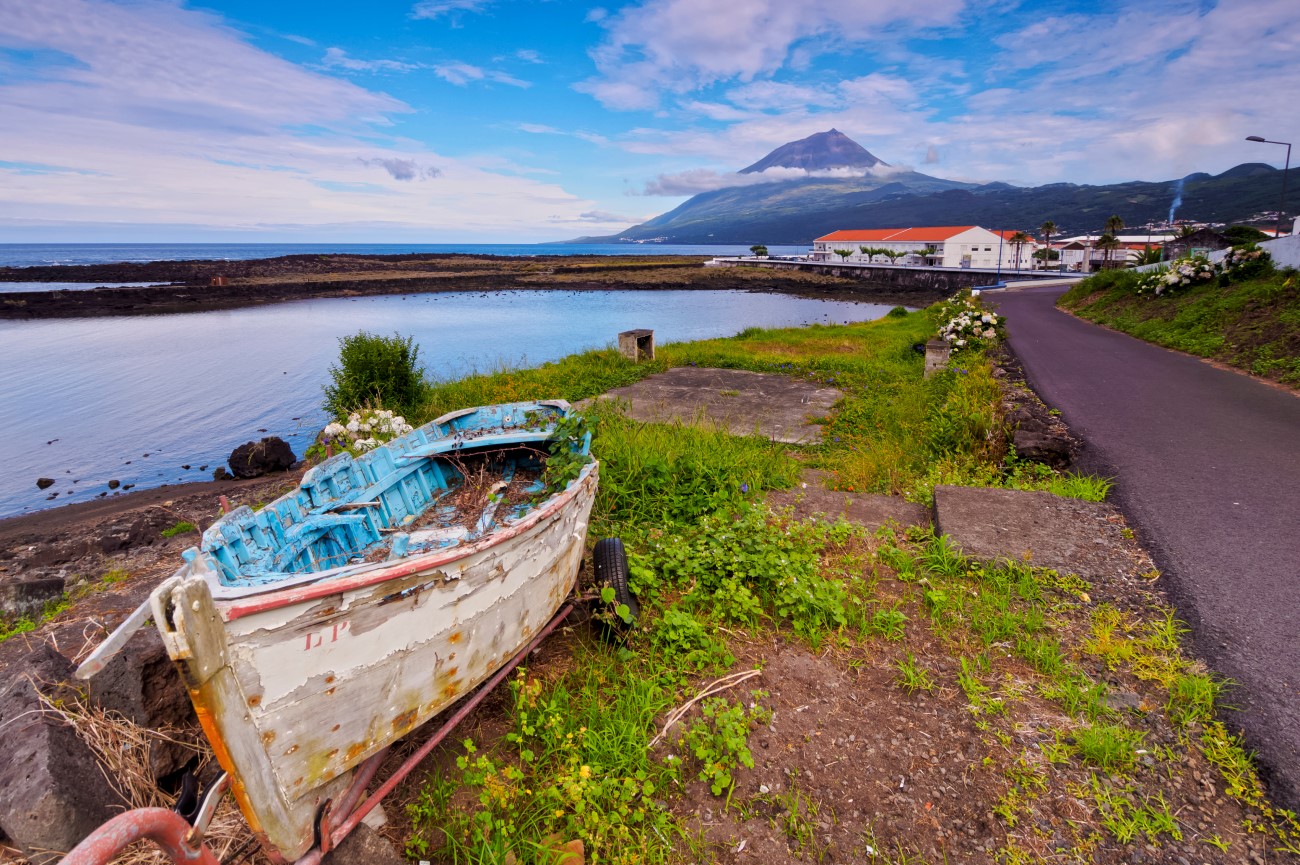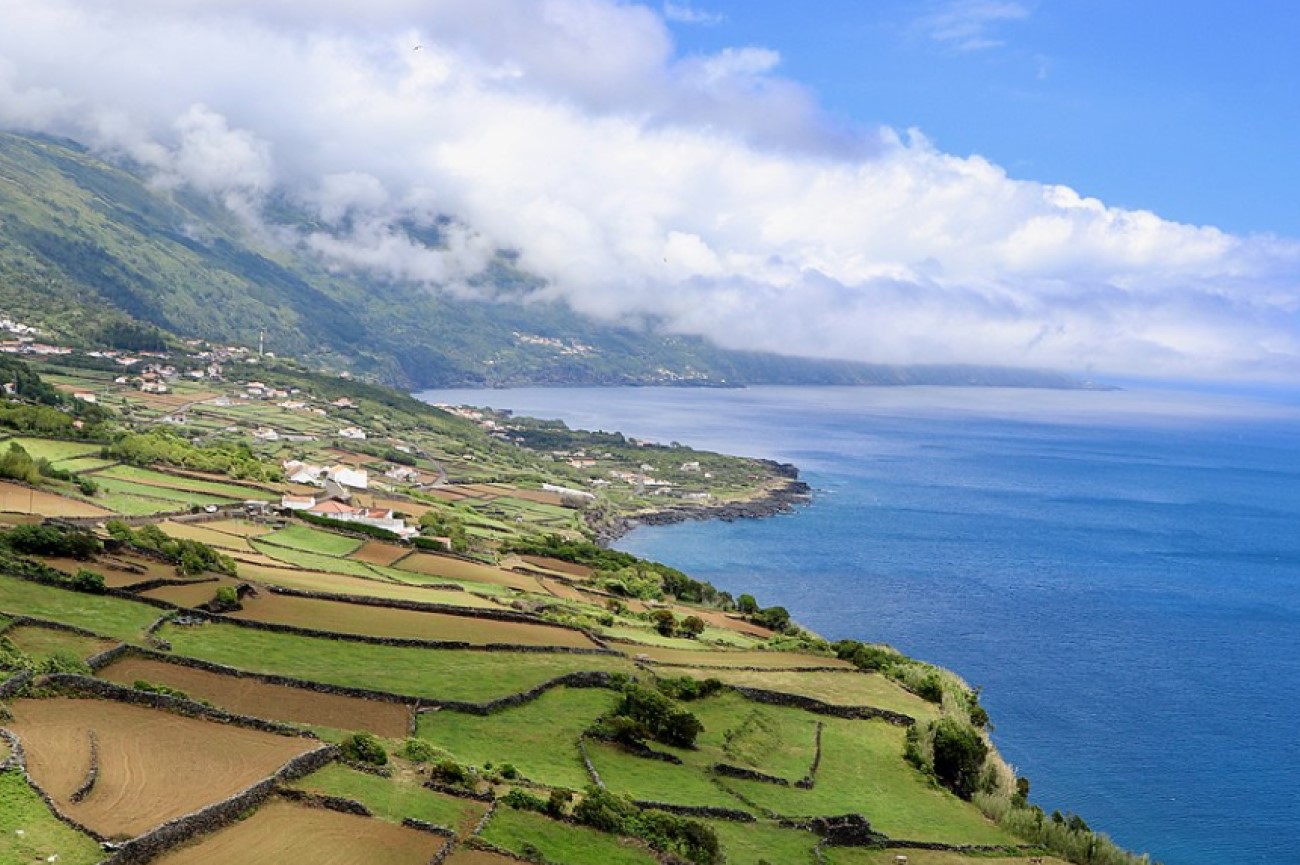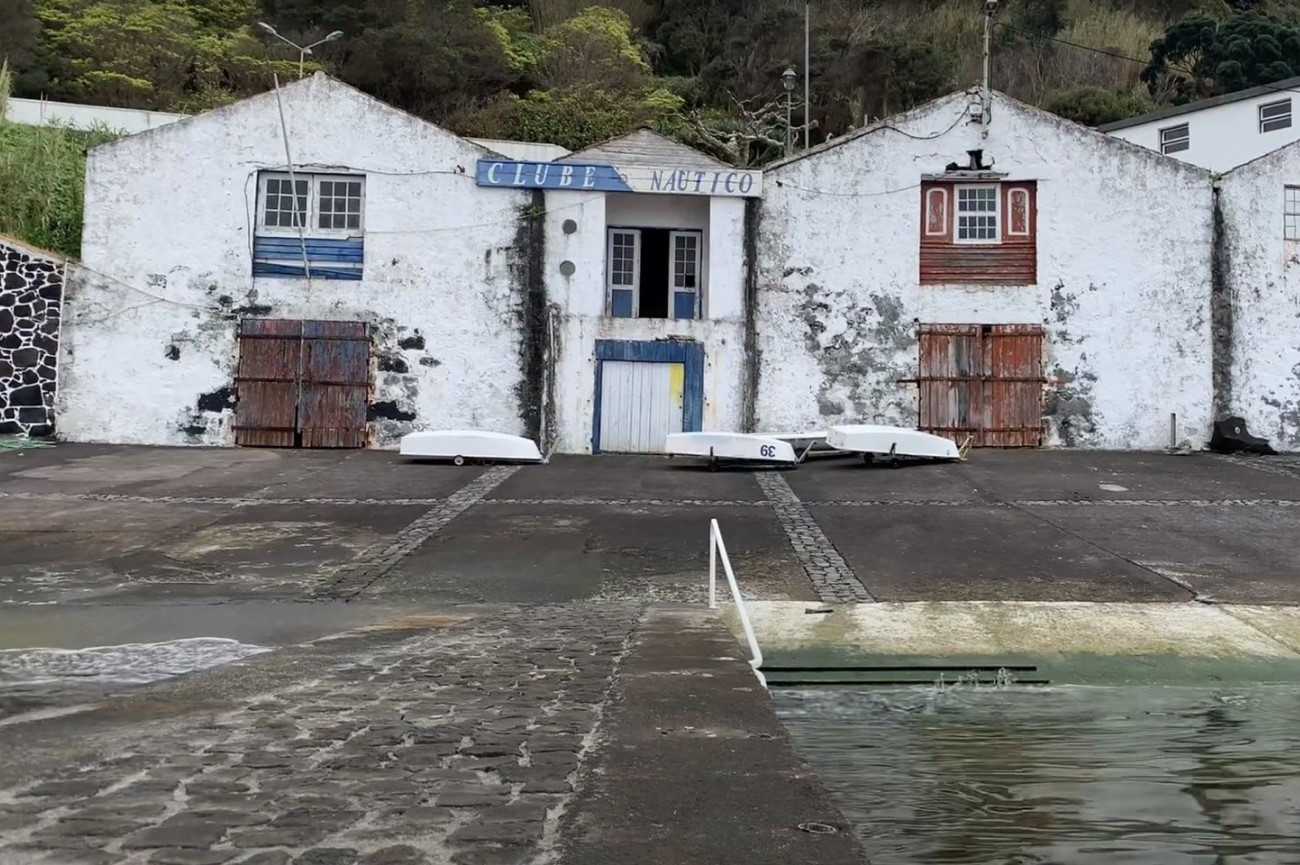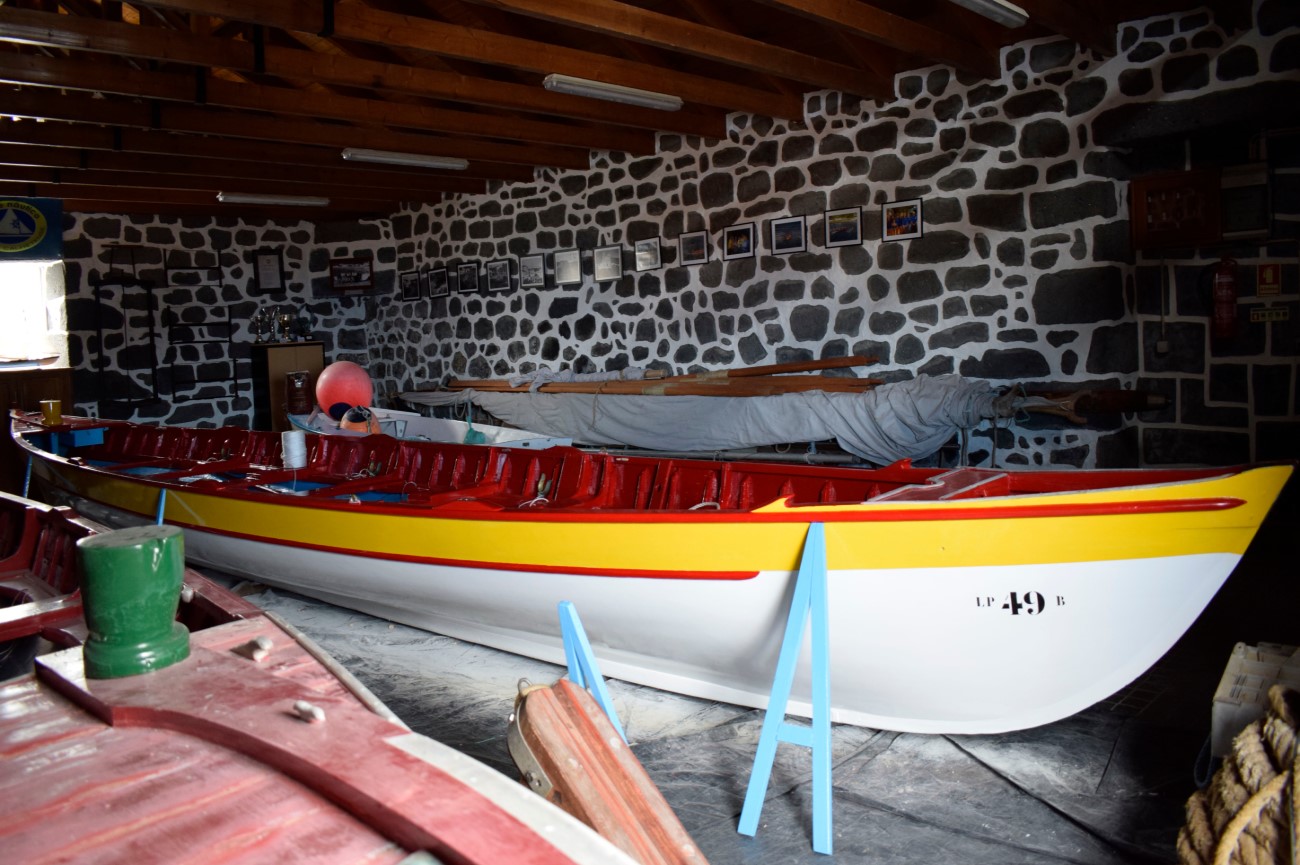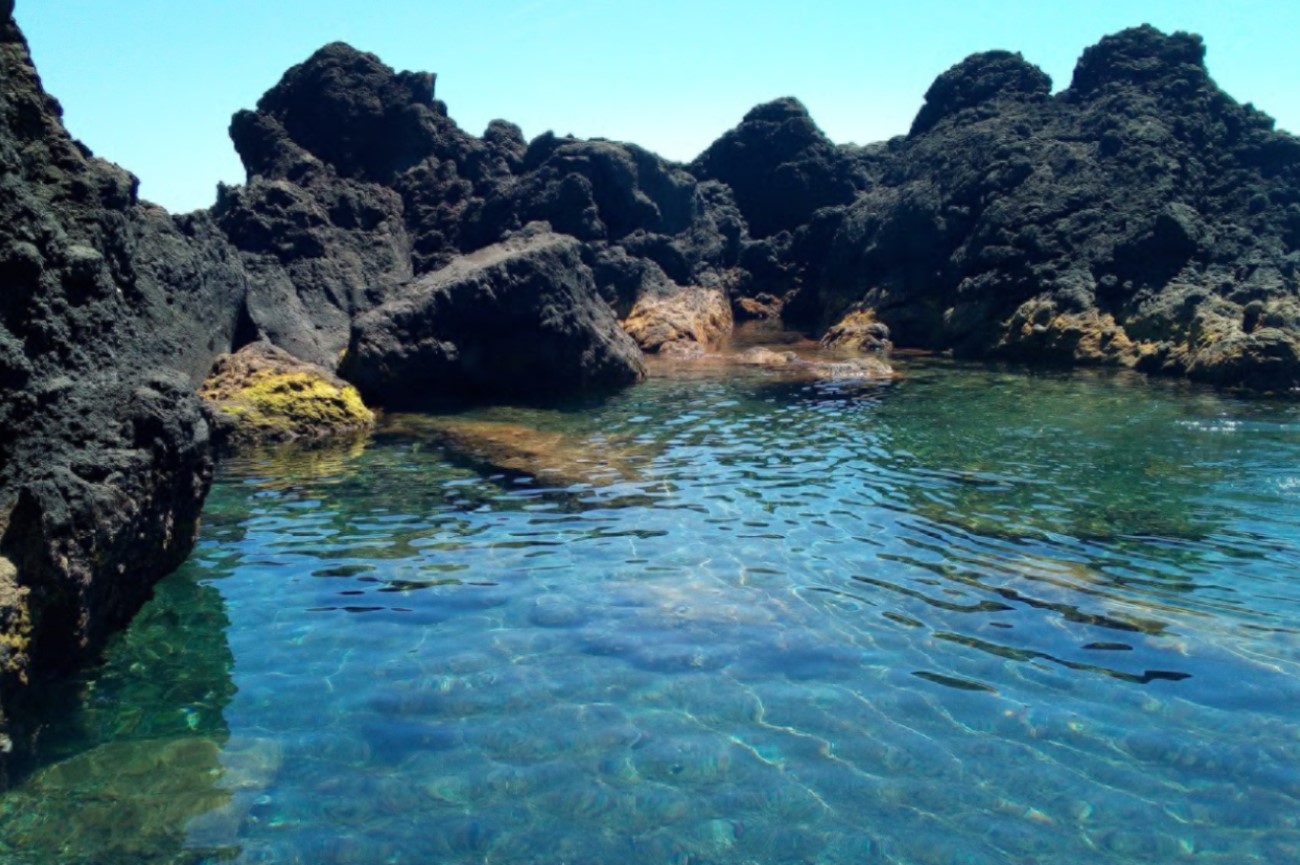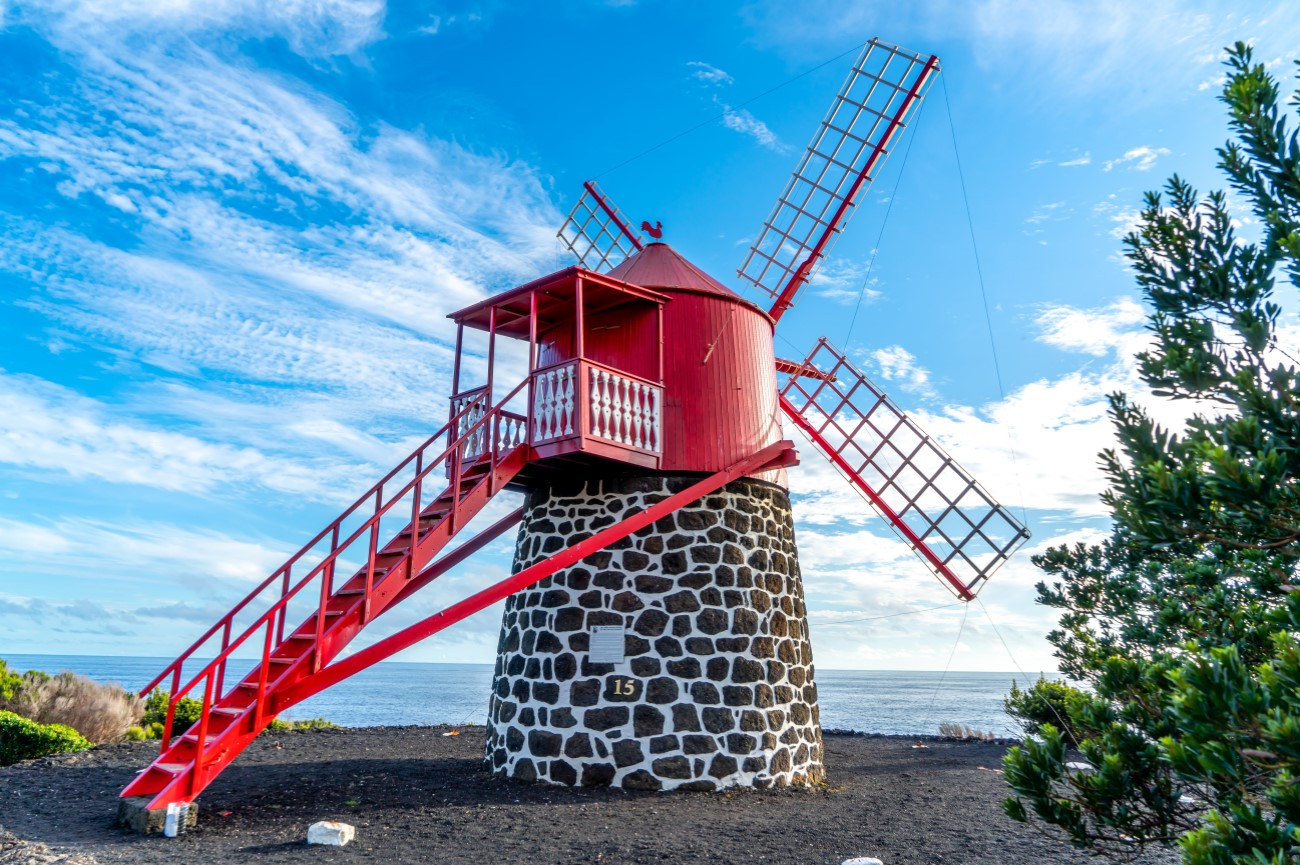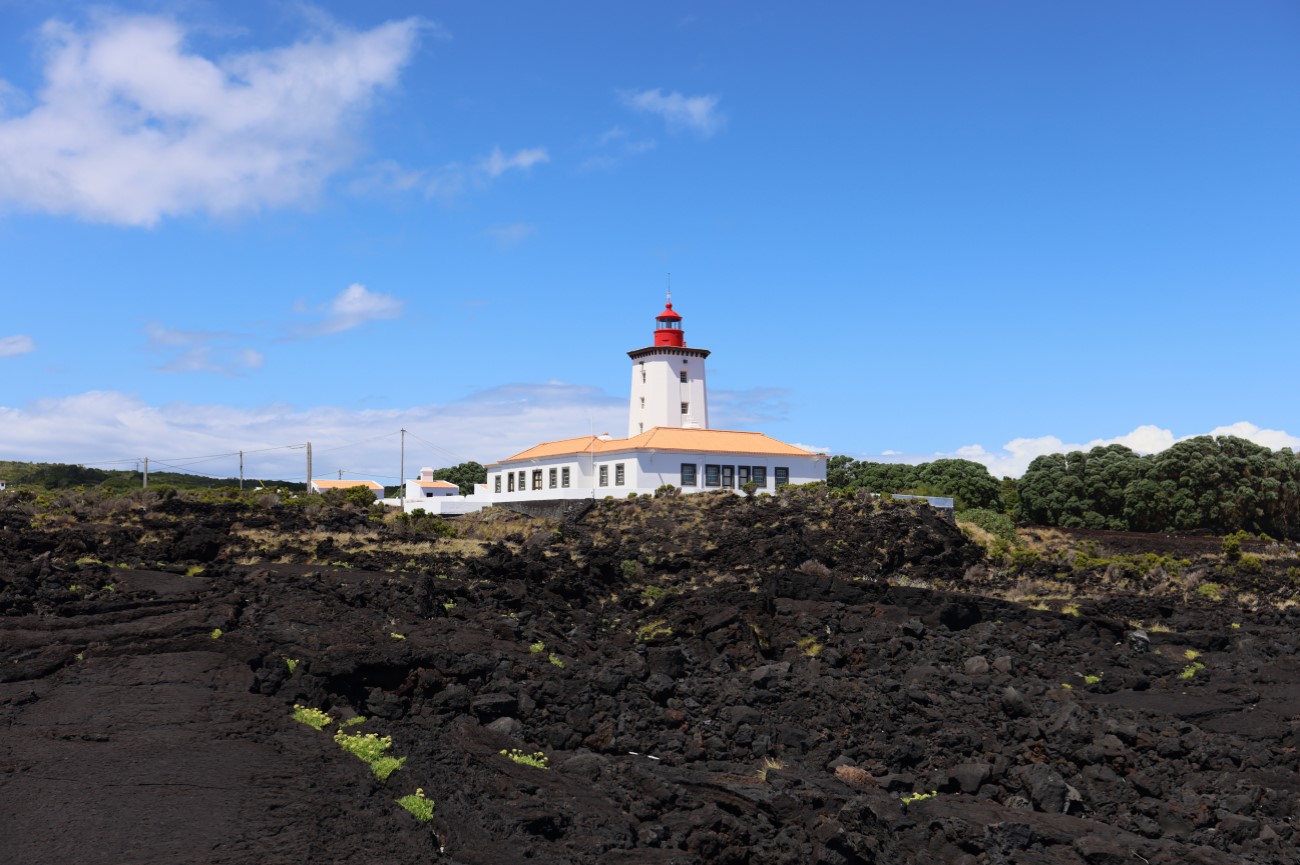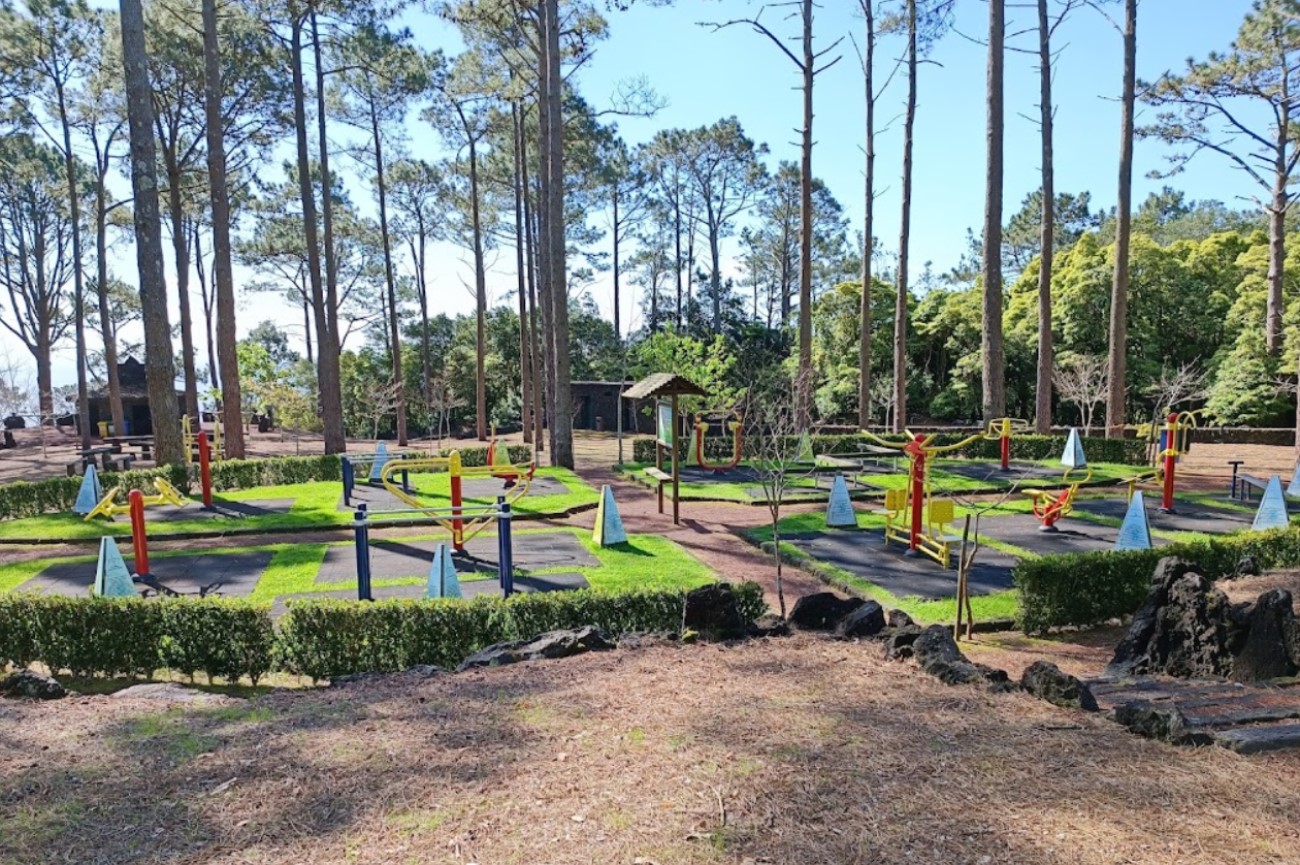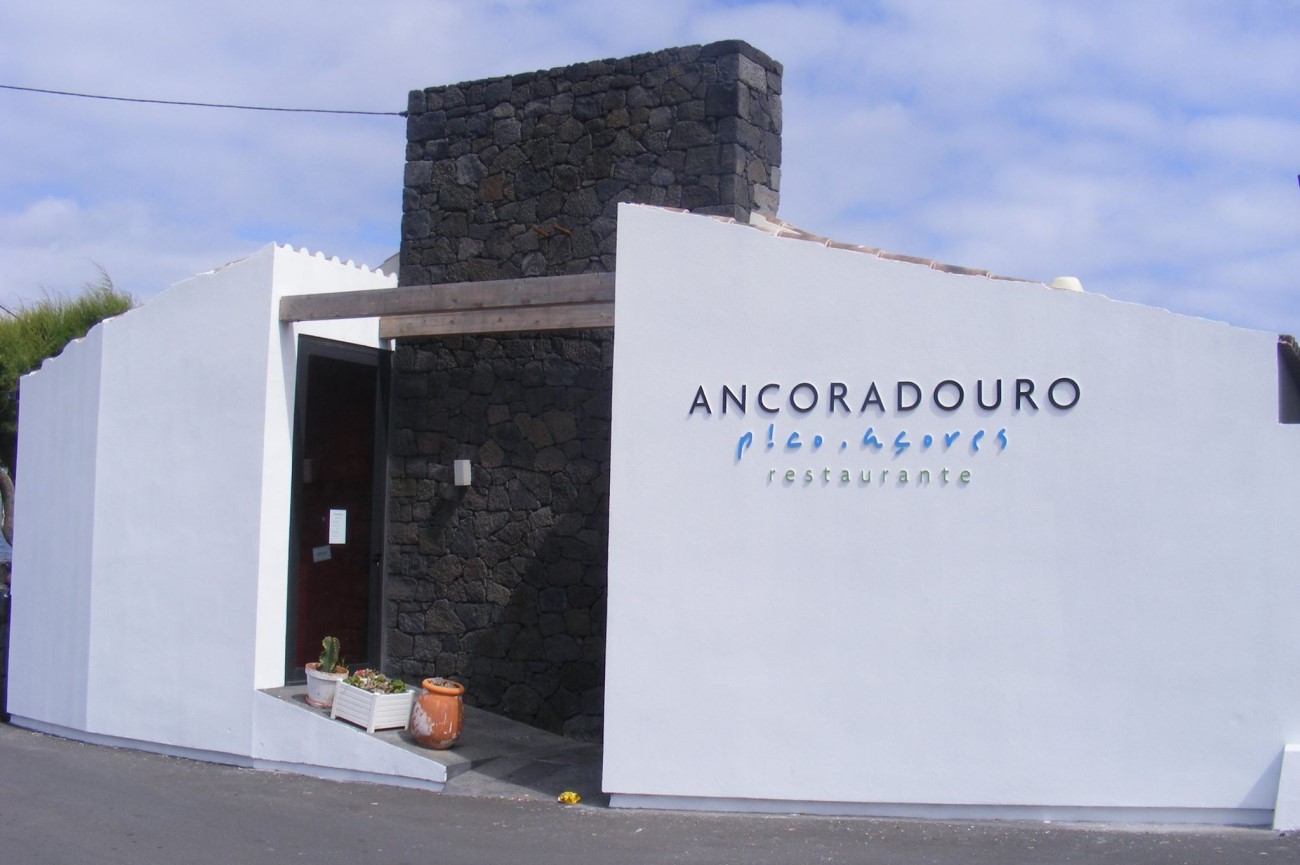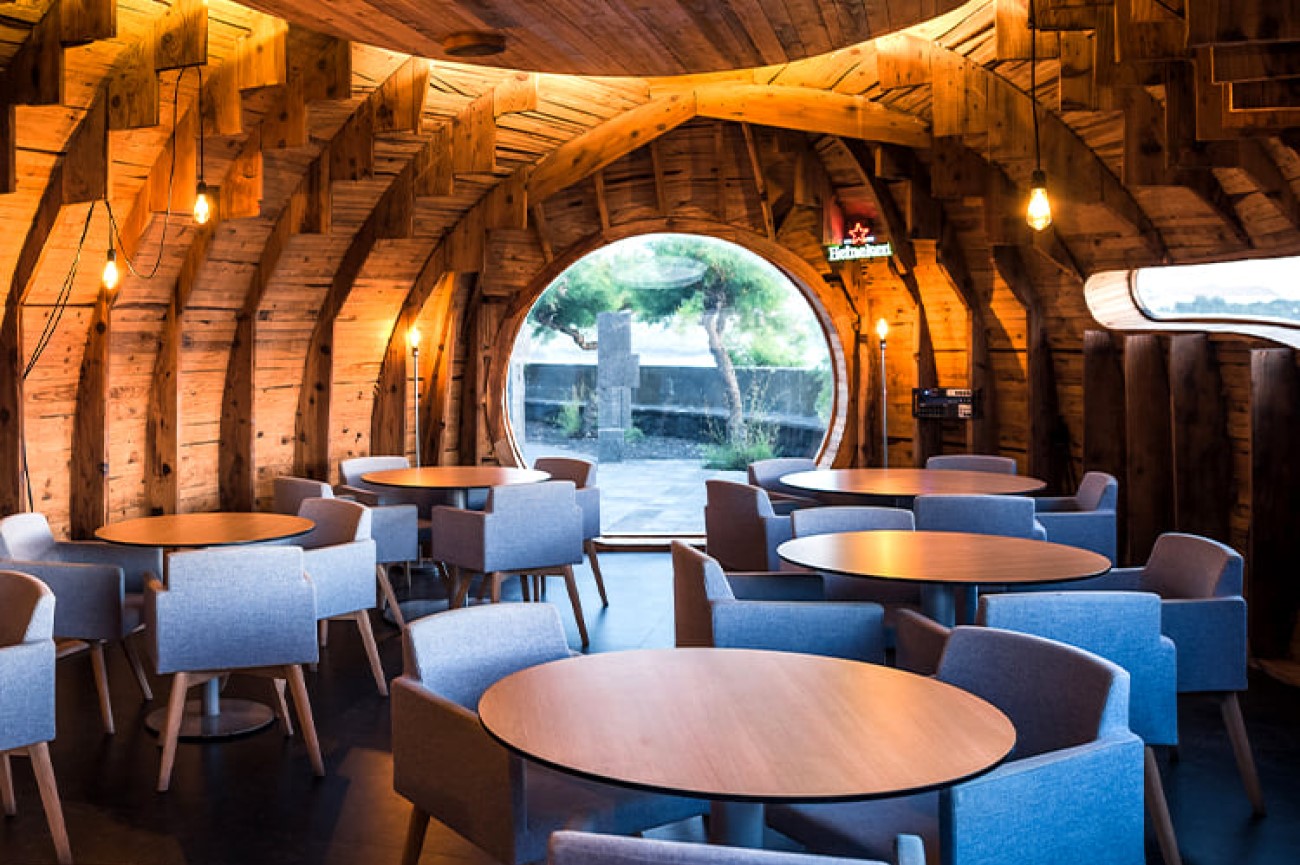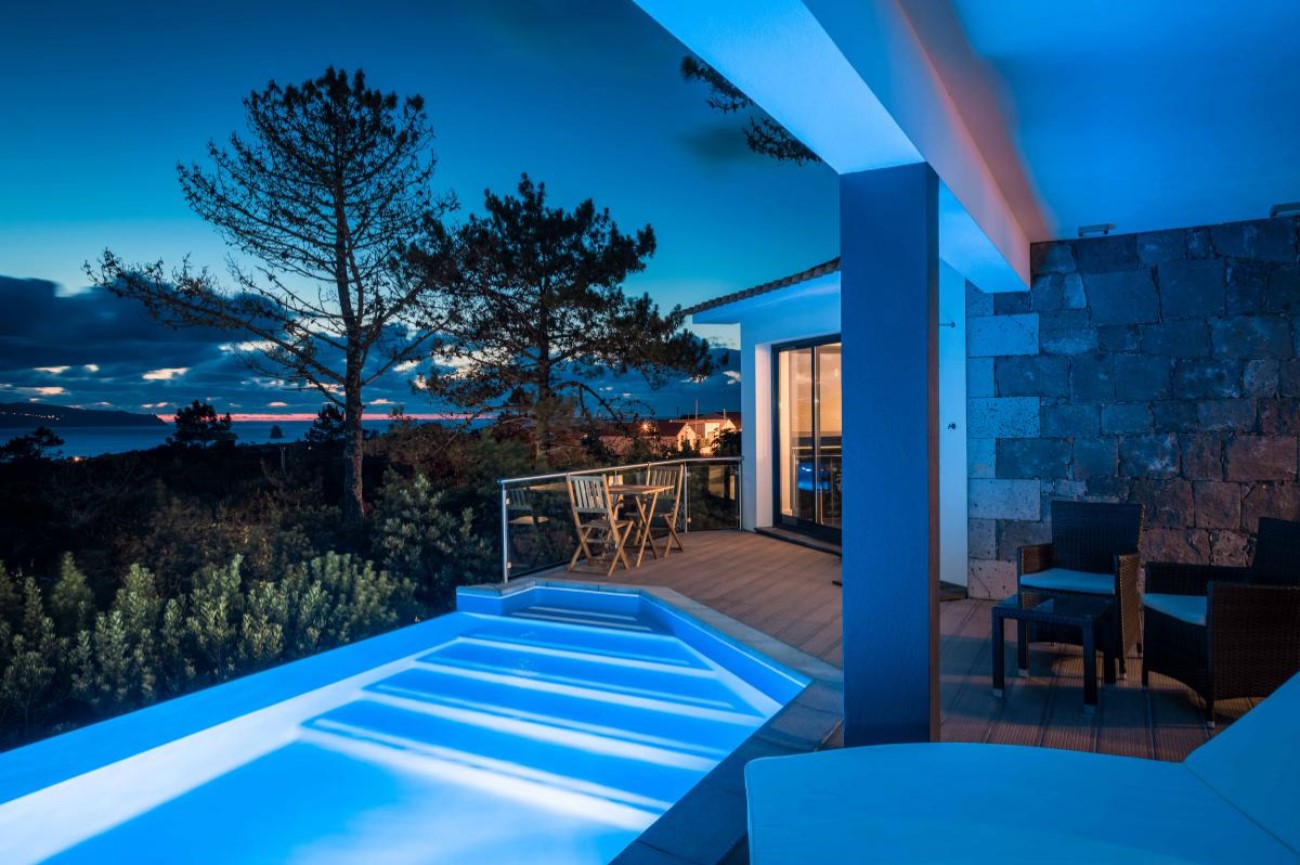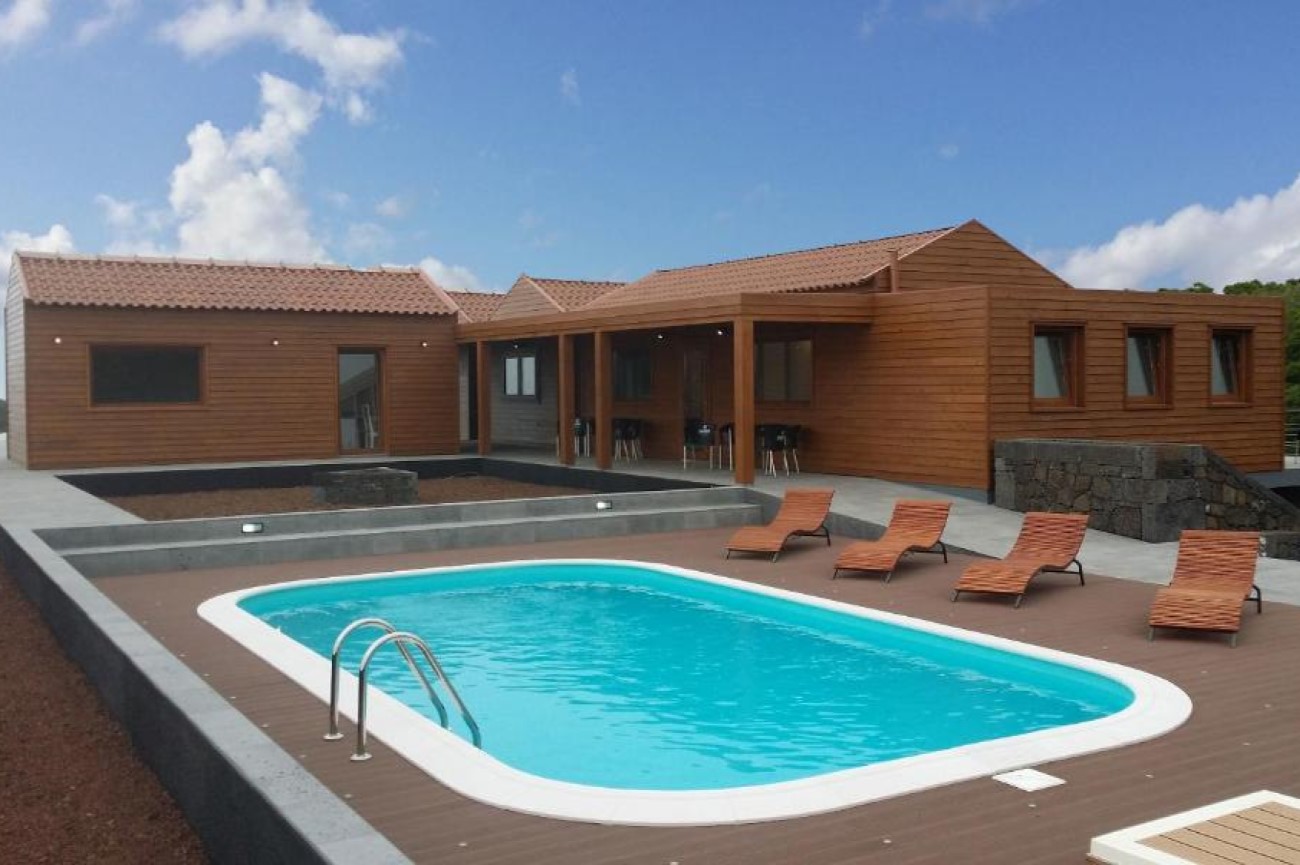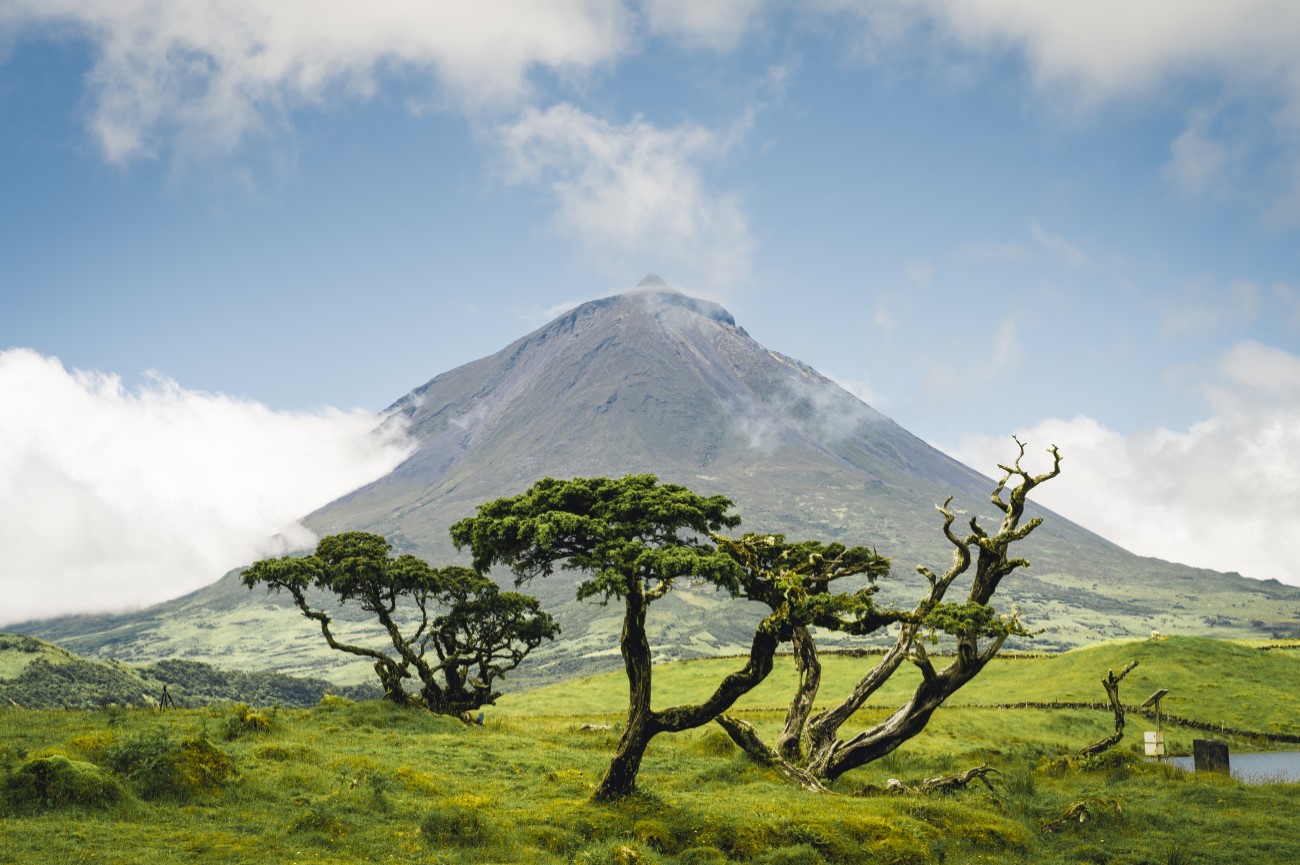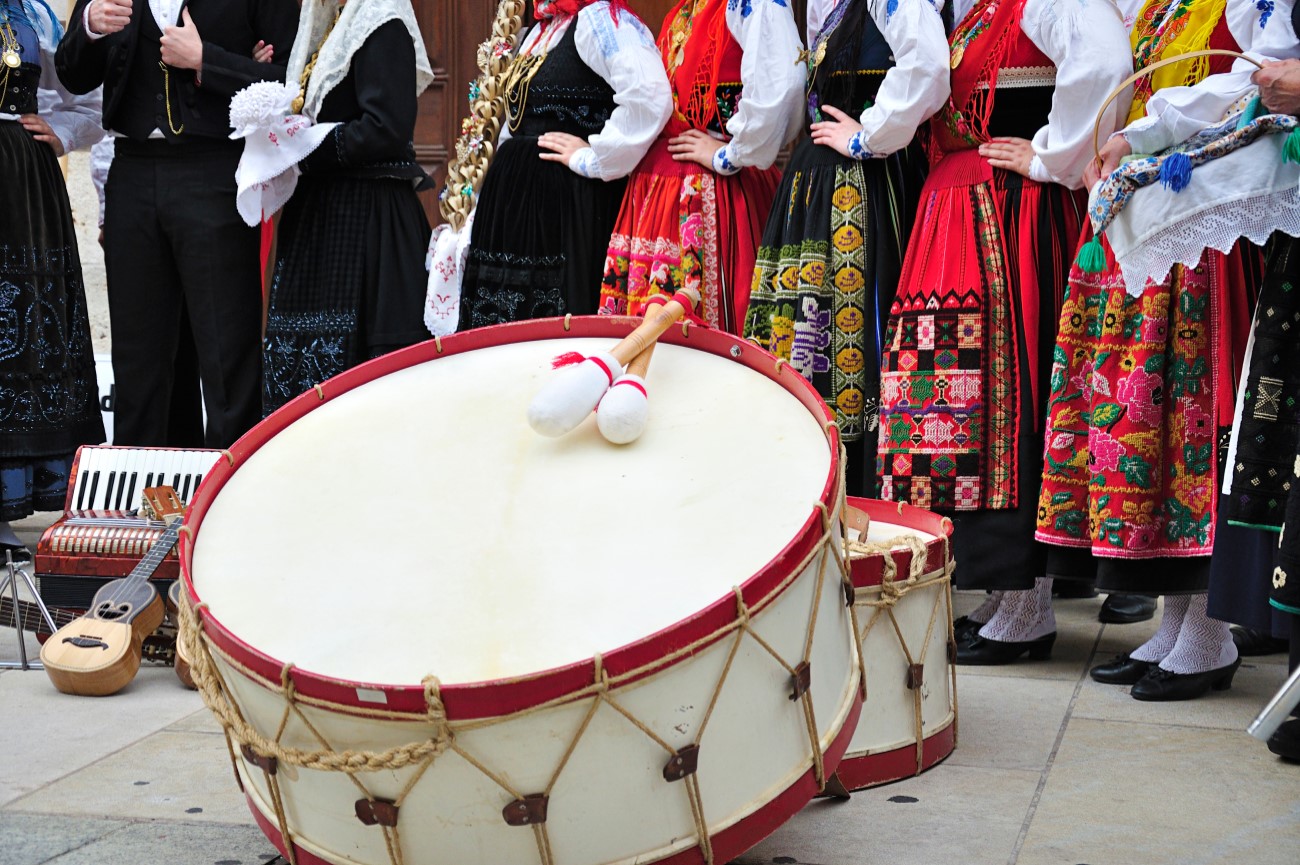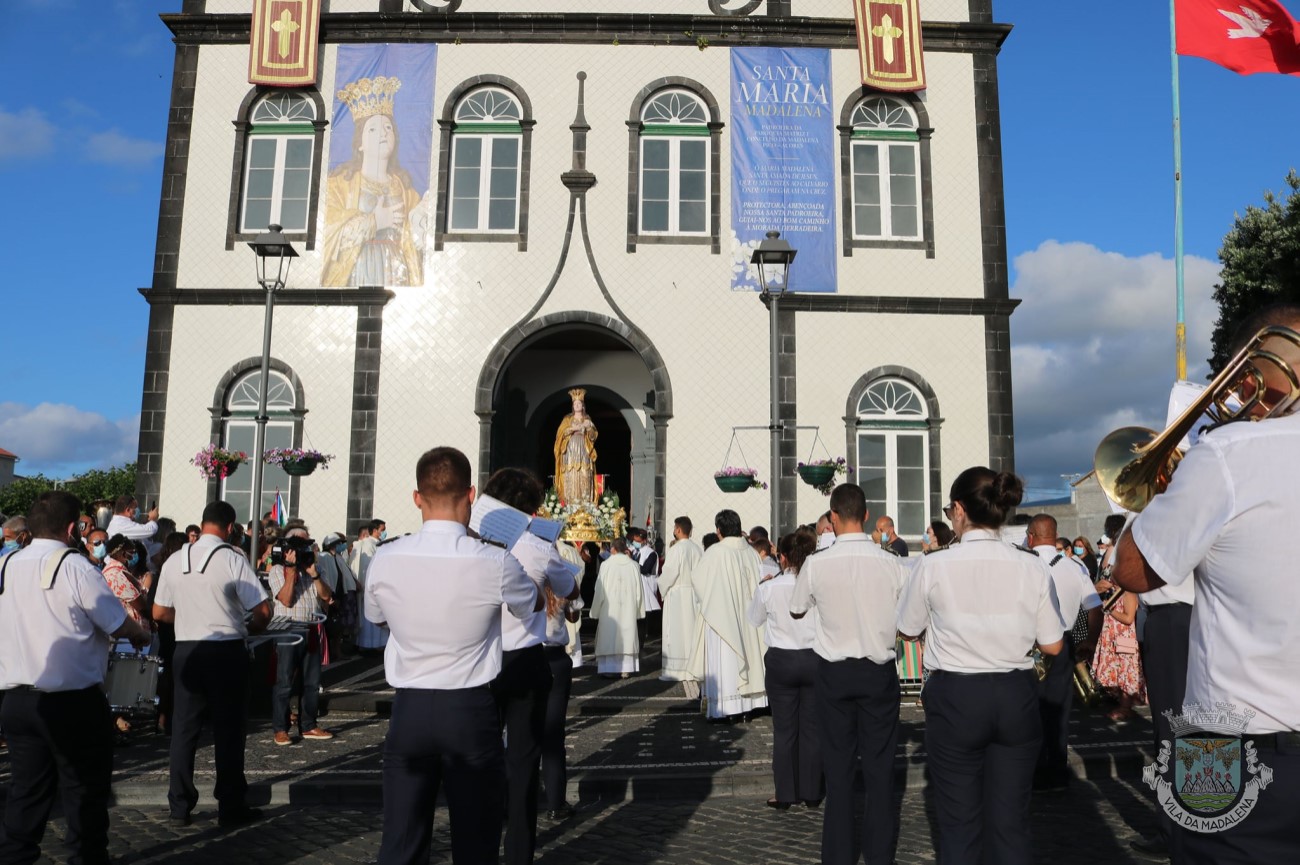Things to do in Pico: 4-day itinerary
Pico is the second-largest island of the Azores. It’s hard to miss the distinctive Montanha do Pico looming 2351m high in the distance. The island’s volcanic origins are evident everywhere you go. From lava tubes to volcanic vineyards, Pico hides many spectacular attractions beyond the shadows of its dormant volcano.
The island offers a wealth of activities for those looking for relaxation or adventure. Whether it’s strolling through Unesco-listed volcanic vineyards, enjoying a whale watching tour, or exploring the island’s many caves, there is no shortage of attractions for visitors to enjoy.
Our four-day itinerary will help you plan your trip to the island. It includes the best things to do, plus restaurants and hotel recommendations.
Day 1 - West

Morning: Gruta das Torres
Don your helmet and hiking shoes as we start our visit at one of the most impressive and grand lava tubes in the Azores. It is wise to book your visit here in advance to catch one of the guided tours into the main tunnel. Designed not to disturb the natural elements, the tour will take you from the visitors centre, down some rocky steps, and deep into the stalactite and stalagmite filled world below. At over 5000 metres in length, the Gruta das Torres is a truly stunning labyrinth of tunnels deep in the mountainside.
Criação Velha
A short drive down the hill from the lava tubes is Criação Velha, an area known for its vineyard dotted landscape. For a relaxing walk, follow the Vinhas da Criação trail from Porto do Calhau to Porto da Areia Larga. On this 7km route, you can stop to admire the many Unesco-listed vineyards and windmills seen in the distance.
For a refreshing swim, head to the natural pools near the ocean. Around here, you’ll spot many escoadas lávicas (lava flows). Nearby you can also find the Moinho do Frade, a water mill with incredible views in all directions.
Afternoon: Madalena
Head to Madalena, the main village in Pico. Our first stop is the local winery Adega Cooperativa Vitivinícola. Here you can learn about the winemaking traditions on the island, including different grape varieties and methods. The tour ends with a tasting of several wines produced in Pico.
Around the port, you can take a dip at the Piscinas Naturais de Areia Funda, a bathing area with natural pools and a municipal pool.
After that, you can stroll through the historic centre to witness beautiful architecture and iconic buildings like the village church, Igreja Santa Maria Madalena. If the sky is clear, you might be able to spot the Pico mountain in the background, one of the most beautiful views on the island.
To learn more about the vineyard activities in the area, continue towards the Museu do Vinho. Occupying an old convent, this museum takes you through the entire wine life cycle, from plant to bottle. There is a working vineyard at the museum and a small viewpoint over the neighbouring valleys.
A bit further out of town, you can go for a swim at the Piscinas Naturais da Barca. These pools are slightly more exposed, so be careful when the sea is choppy.
Day 1 - Pico Island tour map: West
Day 2 - Climb to Pico

Morning: Pico Mountain
We begin the day at the island's main attraction, Pico Mountain. The hike to the top will take about 3 hours, but for those adventurous enough to take on the challenge, you will be rewarded with a look directly at the crater of the third largest volcano in the Atlantic. With the distinctive smell of sulphur in the air, the views from here are unmatched. A particularly unforgettable experience is watching the sunset or sunrise from the peak.
For those unable to climb to the top, there is a short trail that you can enjoy instead. This trail offers stunning views of the countryside and leads to Furna Abrigo, a volcanic cave once used as a hiking shelter.
Casa da Montanha
If you’re not able to climb Pico, make sure to drive up the road to Casa da Montanha. This shelter and visitors centre is 1230 metres up the mountain and is graced with brilliant panoramic views. You can learn about the mountain and the natural reserve here and relax at the bar afterwards.
Afternoon: Furna do Frei Matias
After descending from the peak of the mountain, take the opportunity to explore the nearby lava tubes hidden in the side of the mountain. Furna do Frei Matias contains three accessible paths and is about 650 metres in length. Entrances here are hidden by vegetation, but once you climb down the small volcanic cones, you’ll be face to face with ancient geological features.
Day 2 - Pico Island tour map: Climb to Pico
Day 3 - North

Morning: Zona Balnear do Cachorro
Wake up with an energising swim at the Zona Balnear do Cachorro. Surrounded by volcanic rocks, these turquoise waters are set in a dramatic seaside landscape. Nearby you can spot the Arcos do Cachorro, arches and caves that have been sculpted by the elements.
Centro de Interpretação da Paisagem da Cultura da Vinha da Ilha do Pico
Continue along the coastal road toward Lajido, and you’ll come across the Interpretive Centre of the island. Stop here to learn about the landscapes and wine culture of Pico, and to take a guided tour of a vineyard. Housed in a refurbished old warehouse, the interpretive centre offers several exhibits with information on the island. If you wish to walk on old hardened lava, the tour will also lead you to lava fields, known as lajidos, to explore the remnants of past eruptions.
Afternoon: Adega A Buraca
After lunch, it’s time to sample some local wines from the volcanic vineyards. Located in Santo António, you’ll find Adega A Buraca just off the main road. This complex, made of basaltic stone, was founded in 2007 by Leonardo Ávila Silva, to revive the history of the people of Pico. A Buraca specializes in Verdelho wine, named after a classic grape from Portugal.
Furna de Santo António
Only a two-minute journey down the road, you can find an amazing spot for a break. The natural pools of Furna de Santo António are very popular among locals as they offer a striking scenery, with rocky formations jutting out like gates into the ocean. Fully equipped with amenities and concrete walkways as well as two saltwater pools, this area is perfect for the whole family.
São Roque do Pico
Adjacent to the natural pools you can wander into the town of São Roque do Pico. São Roque has a history of whale hunting which is detailed in the Museu da Indústria Baleeira. Here you can learn the story of the whale hunting industry and the processing that happened on land.
Make sure not to miss the port and the Moinho da Ponta Rasa, an iconic red and white windmill on the edge of town.
Prainha
If you would like to visit the only beach on Pico Island, you’ll have to venture out to the town of Prainha and find the beach of Canto da Areia. This beach is located in a bay and has black volcanic sand.
Day 3 - Pico Island tour map: North
Day 4 - East

Morning: Explore the lagoons
We begin our day in the mountains, touring the lagoons formed by volcanic craters on the island's plateau. Lagoa do Capitão is the most famous lagoon characterised by its lush greenery and gorgeous views of Pico Mountain in the background. Lagoa do Caiado is the biggest lagoon on the island. Other lagoons worth visiting include: Lagoa Seca, Lagoa da Rosada, and Lagoa do Peixinho.
Lajes do Pico
Turning our attention from mountain to ocean, an activity not to miss on Pico is whale watching. There are many boat trips available from the village of Lajes do Pico, a seaside community with a rich history of whale hunting and now whale watching.
For a human perspective on the history of whale hunting in Lajes, visit the Museu dos Baleeiros. Afterwards, be sure to pass through the village to appreciate the historic architecture and the port area.
Afternoon: Miradouro da Ponta do Arrife
A few minutes outside the village of Lajes do Pico, you’ll notice the Miradouro da Ponta do Arrife. Stop here for unparalleled views of the south coast, with its lush green fields and colourful roofs dotted throughout the landscape.
Ribeiras
Like many areas of the island, Ribeiras once was a thriving centre for the whale hunting industry. Pay a visit to Clube Naútico and you may just meet some of the old whalers from the area who are willing to tell their stories. On a warm day, you can also go for a swim in the bathing area near the coast.
Calheta de Nesquim
For a different look at whaling on the island, pop into the small museum in Calheta de Nesquim. Here you can learn about the houses that once held the whaling boats, as far back as the 19th century.
Poça das Mujas
Crystal clear waters, sheltered from the waves and currents of the ocean, make these natural pools some of the best to swim in on the island. For some more adventure, you can choose pools more open to the currents as well. A short walk away you can spot another fantastic red windmill, the Moinho Mourricão.
Farol da Ponta da Ilha
Ending our tour of Pico Island just as we started it, with breathtaking views of the landscape, we now head to Ponta da Ilha. This is a protected area full of lava fields and some of the island’s endemic flora. Among the volcanic landscape, you’ll find the Farol da Ponta da Ilha, which is one of the newest lighthouses built in the Azores. It is possible to climb to the top of this lighthouse, although you can enjoy spectacular views whilst staying on the ground as well. For this last stop, you will be blessed with views of the vast ocean, and possibly even São Jorge Island to the north.
Day 4 - Pico Island tour map: East
Top things to do with kids in Pico
Exploring the island’s natural sights is one of the best things to do as a family in Pico. Make sure to visit the Parque Natural da Ilha do Pico, the largest natural park in the Azores and one of the best places to capture the Pico mountain.
Kids will also enjoy exploring the island’s caves and natural pools. If you feel like doing a picnic, the Reserva Florestal dos Mistérios de São João is the perfect spot for it.
Alternatively, you can spend some time touring the iconic windmills or visiting museums dedicated to the island's former whaling industry. Even better, you can book a boat tour to spot the many whales now swimming peacefully around Pico.
Where to eat in Pico
Pico has a diverse culinary scene, combining both meat and seafood delicacies. Popular meat dishes include the torresmos de porco (pork crackling) and the linguiça com inhames (Portuguese sausage with yam). There's also fish soup, limpets and stews made with octopus or squid. As a starter, don't miss Pico's traditional cheese, Queijo Artesanal Alfredo or Queijo de São João, and make sure to pair your meal with a glass of local wine. Below are some of the best places to eat in Pico:
- Aldeia da Fonte: You don’t have to be a guest at this hotel to sample the food at the restaurant. The menu features innovative dishes using traditional Azorean produce. In the summer, you can enjoy a seat on their leafy outdoor terrace.
- O Ancoradouro: Located in the village of Madalena, this is one of the best places to taste some of Pico’s local delicacies. Don't leave without trying the pudim de mel, a delicious pudding made with honey and cinnamon.
- Cella Bar: With its striking architectural features and stunning views, this is considered one of the most beautiful bars in the world. It’s worth stopping here to grab a cocktail and enjoy the sunset over the sea.
- Magma: Part of the Lava Homes resort, this fine dining restaurant in São Roque do Pico is renowned for its top-notch steaks. You can also sample other local dishes such as limpets or squid.
Where to stay in Pico
- Atlantic Heritage Luxury Villa (4 stars): This stunning villa is located in the village of Criação Velha, near the many vineyards of the island. The villa comprises four en suite bedrooms, a private infinity pool, and a jacuzzi to relax in. Whether you’re looking for a family getaway, a romantic holiday, or a group trip, the amenities and surrounding landscape will help you unwind and relax.
- Pocinho Bay (4 stars): Nestled among vineyards, with views of Faial Island and the ocean, Pocinho Bay is an upscale hotel with many rustic-chic rooms and an outdoor pool. Just 10 minutes away from the village of Madalena, and 30 minutes from the airport, the hotel is easily accessible and offers an intimate and homely atmosphere.
- Alma do Pico (3 stars): Hidden in the forest, the timber cabins at Alma do Pico come with minimalist decor and kitchenettes. Some units also have verandas and pull-out couches for extra guests. There is also an outdoor pool available. Just an 11-minute walk from the Museu de Vinho, these cabins can accommodate groups of up to 26 people.
Best time to visit Pico
The weather in the Azores is quite humid with regular rain and often strong winds. On Pico Island, it often rains in winter and it's even possible to see snow in the higher parts. Meanwhile, summer offers hot and sunny days, but it's rare to see completely clear skies. With this in mind, the best time to visit Pico island is between June and September. If you come at this time you'll also have the chance to catch some of the most important local festivities.
Pico festivals
- Cais de Agosto: Hosted around July or August, this festival in São Roque do Pico includes live music, sporting competitions, food stalls, traditional parades, and exhibitions.
- Festas da Madalena: The patron saint of Madalena is celebrated during this local festival held around the 22nd of July. There are religious celebrations as well as concerts and sporting activities.
- Semana dos Baleeiros: In Lajes do Pico, Nossa Senhora de Lurdes, the patron saint of whalers is celebrated. Beginning the last Sunday of August and lasting for a week, this festival dating back to the 19th century features religious ceremonies and activities related to old whale hunting traditions.


